








Bill













Bill



Conclave includes viable papal candidates from several continents:
John Paul II truly internationalised the College of Cardinals. . . . . . . . . . . PAGE 3
The rules of the game:
This is how it will actually be decided . . . . . . . . . . . . . . . . . . . . PAGE 4
Few papal elections were foregone conclusions:
None of those highlighted as frontunners in recent history have been elected . . . PAGE 6
Challenges the new Pope will face:
CNS’s John Thavis looks at some of the issues likely to face the next Pope. . . . . PAGE 8
Conclave rules emphasise secrecy:
Everyone participating is sworn to secrecy about what will take place this week. . PAGE 9
Was the new Pope in the final consistory appointed by John Paul II?:
The whole world is watching. Read about how it will be done . . . . . . . . . . PAGE 9
What is the papacy?:
Bishop Gerard Holohan explains the office and responsibilites of being a Pope. . PAGE 10
Overseeing the Papal election:
The Chamberlain runs the ship until the next Pope is chosen. . . . . . . . . PAGE 10
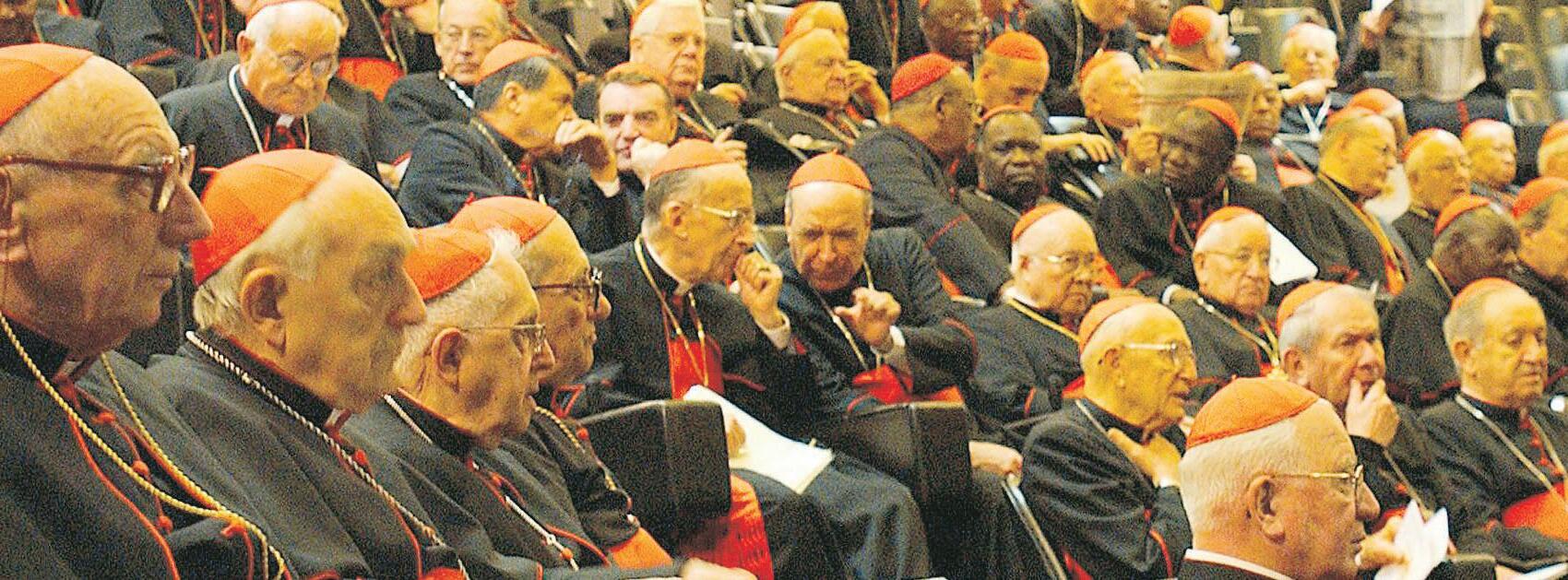




The cardinals gathering to elect Pope John Paul II’s successor will be the most international conclave ever held, with influential electors and viable papal candidates from several continents.
■ By John ThavisPope John Paul’s more than 26-year pontificate saw the world’s Catholic population shift toward Latin America, Africa and parts of Asia, and many observers think the moment has arrived for a Third World pope. That would be a revolution, but hardly a shocking one: Cardinals from developing countries today represent nearly half of conclave voters.
Others in Rome believe that following the first non-Italian pope in 455 years, it’s time for an Italian again - one who can use the traditional skills of compromise and consensus-building to increase unity in the Church.
Despite years of public speculation by the media and private reflection by the cardinals, there is no clear favourite in the conclave that will convene to elect the 265th Roman pontiff.
“The Italian cardinals appear divided, as they were in the last conclaves (of 1978). If the Latin American cardinals were to unite behind a single candidate, that might be enough to determine the election. But it’s not clear whether that will happen,” one cardinal said in March.
Some would say the lack of a frontrunner leaves ample space for the action of the Holy Spirit. But it also allows for subtle persuasion during closeddoor deliberations - called “general congregations” - held by the College of Cardinals in the days before the conclave begins, and in the informal meetings that take place among small groups of cardinals in Rome.
“You can expect the cardinals to get serious about looking for a successor when they sit down in the general congregations. For the first time, they’ll be discussing the future of the Church without the pope being present,” said one longtime Vatican official.
The general congregations are open to all of the world’s 183 cardinals, but only those under age 80 can take part in the actual conclave in the Sistine Chapel. The voting cardinals today number 117, and only three of them have ever participated in a conclave before.
Geographically, the cardinals are more spread out than ever before, but they have come together more often than in past eras - in Rome for synods, consistories and frequent Vatican meetings, and elsewhere for regional Church events. Many of the cardinals have traveled extensively, visiting church communities around the world. Most observers say that means they know each other far better than the cardinals who gathered at the last two conclaves in 1978.
Previous conclaves have been logistical ordeals, as cardinals camped out in makeshift quarters in the ancient rooms of the Apostolic Palace. But this time the cardinals will reside at the Vatican’s modern and comfortable guest house, the Domus Sanctae Marthae, and ride a bus to their sessions in the Sistine Chapel.
Although the cardinals will no longer be locked inside the voting area, they will pledge to uphold the absolute secrecy of the conclave’s proceedings and to avoid contact with the outside world until it is over.
Twelve days after the pope’s funeral, the cardinals will process into the Sistine Chapel and begin the voting process. A single vote can be held on the first day, and then the rounds of balloting - two in the morning and two in the afternoon - proceed with occasional daylong pauses until a new pope is elected by a two-thirds majority. Under new rules written by the late pope, however, it will be easier to move to a simple majority vote if the conclave goes past 12 days.
One thing is certain: Having appointed more than 97 percent of the voting cardinals, the late pope remains an influential figure in the coming conclave. None of the true “papabili,” or potential popes, have shown any indication they would alter the pastoral directions established by Pope John Paul.
The cardinals who are considered the strongest candidates for election include several from Italy and other European countries, at least three from Latin America and an African.
For centuries, Italians controlled the conclave and invariably elected one of their own. Even today,

some cardinals think there are built-in reasons to elect an Italian pope: the Vatican’s location as an enclave inside Italy, the fact that Italian is the common language of the Roman Curia, the role the Vatican has historically played in Italy and the pope’s own position as bishop of Rome.
But in recent years, no Italian cardinal appears to have garnered the kind of pre-conclave support needed to propel him to a quick election. Instead, speculation has centered on two or three cardinals who represent slightly different wings of Italian Catholicism.
Cardinal Dionigi Tettamanzi of Milan, 71, is considered by many the front-runner. Short, stout and quick to smile, he is viewed as a theological conservative with a strong social conscience. He is seasoned in church administration, having held key positions in the Italian bishops’ conference. A teacher of moral theology for 20 years, he helped prepare Pope John Paul’s encyclical on human life issues, “Evangelium Vitae,” and in 2000, he wrote an online “e-book” on medical ethics. He is also considered one of the Italian church’s top experts in marriage and family ministry, the lay apostolate and youth formation.
Increasingly, Cardinal Tettamanzi has spoken out on social issues at home and abroad, highlighting in particular the populations left behind by globalisation. He drew criticism from the right when, as archbishop of Genoa in 2001, he defended protesters at a G-8 meeting in the city and spoke movingly of the new situations of poverty in the world. In Milan, he has repeatedly challenged the city to live up to Gospel values in the way they treat society’s weakest members.
Cardinal Tettamanzi came to the media’s attention at the 1999 European Synod of Bishops, where some leading bishops suggested a churchwide council to examine possible reforms and a
Continued on page 4
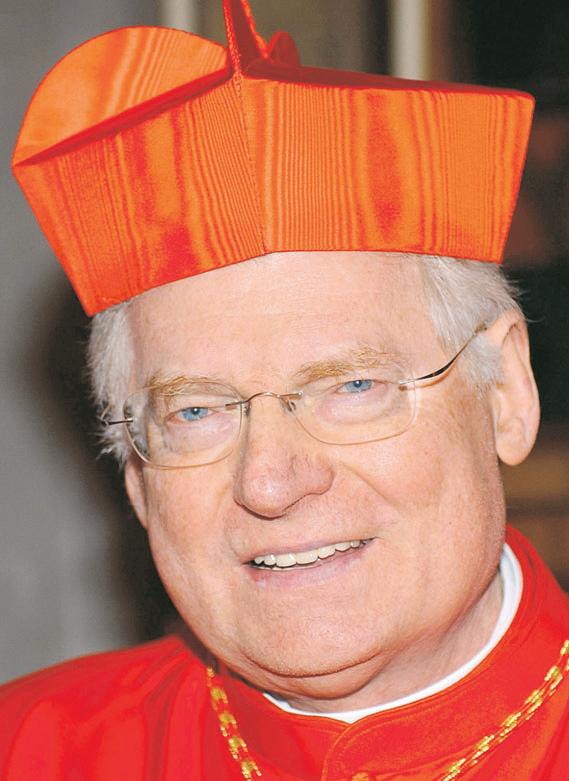

For honest, reliable service and care of your investment property.
Contact (08) 9459 3600 or email Trish Humphries at trish@ppre.net
www.ppre.net

Mr Denis McInerney Dealer Principal of Paul Zappia
Paul Zappia, the management and staff at McInerny Ford would like to offer their sincerest condolences to the Catholic community at the passing of his Holiness Pope John Paul II.
239 Walter Rd, Morley, Tel. 9275 1222
website: www.mford.com.au
email: fordsales@mford.com.au
A/Hrs 9275 1531

The staff and students of The University of Notre Dame Australia give thanks for the life and work of John Paul II, a man of faith and courage. He fought for freedom for oppressed peoples and had a steadfast commitment to the sanctity of life.
Maranatha Institute for Adult Faith Education Catholic Education Centre 50 Ruislip Street Leederville
TERM 2 COURSES 2005
All courses 10 weeks
Cost - $60 each course
Beginning Tuesday 26 April
9.30am-12pm The Art & Heart of Non-Violent Conflict with Brendan McKeague & 1pm-3pm Catholic Social Teaching with Terry Quinn
Beginning Friday 29 April
9.30am – 12pm From Eden to the Promised Land: A journey through the Old Testament with Stephanie Woods (this is a new course) & 1pm – 3pm The Gospel in the Year of Matthew (Year A) with Sr Shelley Barlow RNDM (this is a new course)
for further information
Ph: 9212 9311
Office Hours: Tuesday, Thursday & Friday 9am-1.30pm. or email: maranatha@ceo.wa.edu.au
less-centralized style of church governance. At a closing press conference, Cardinal Tettamanzi said the proposal had found “no echo” at the synod.
Cardinal Angelo Scola, 63, is a respected academic and theologian who has headed the Patriarchate of Venice since 2002. Considered by many as a “cultural warrior,” his eagerness to push church teachings in the public forum has earned him plaudits from other church leaders. He travels extensively, speaks several languages and remains a prolific writer despite a heavy pastoral schedule.
Cardinal Scola is considered a friend of new church movements, having spent several years with the Communion and Liberation movement as a young student and priest in Milan. He has tried to stimulate lay formation in Venice, inaugurating an important new educational complex that offers theology degrees followed by specialist studies in bioethics, business ethics, art and social sciences. He also has forged new contacts with Orthodox churches and reached out to support Christian minorities in the Middle East.
Cardinal Camillo Ruini, who worked for years in the pope’s shadow as papal vicar of Rome, is seen as a longshot Italian candidate who, if elected, would press ahead with the late pope’s agenda. President of the Italian bishops’ conference since 1991, Cardinal Ruini, 73, gets high marks for administration

Dean of Studies
Three Lecturer/Senior Lecturer positions
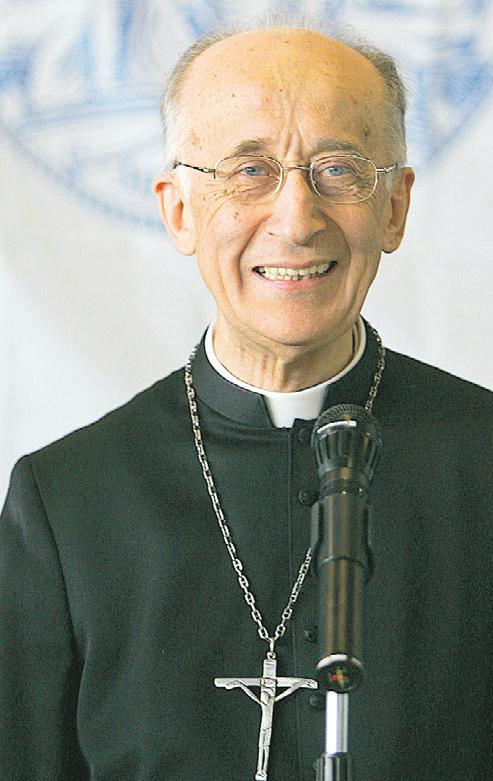
Cardinal Camillo Ruini
but low marks for charisma. After the Sept. 11, 2001, terrorist attacks, he supported the right of the United States to respond militarily. In Italy, he has pressed hard against legislative attempts to introduce euthanasia and a number of proposals that would weaken the traditional definition of the family.
Campion College Australia is scheduled to commence teaching in 2006 as a new private higher education institution located at Old Toongabbie in western Sydney. The College is planning for an intake of 60 – 100 students and will initially provide a Bachelor of Arts in the Liberal Arts with a distinctive cultural identity as an institution of Catholic inspiration.
The College seeks academic staff with broad disciplinary backgrounds, including a capacity to teach in more than one subject area and to work collegially in a Catholic Liberal Arts setting. Applicants should have experience in interactive teaching and learning in the context of small classes, and a commitment to a broad and integrated curriculum that fosters intellectual development. Applicants should be strongly committed to fostering a Christian culture in harmony with the teachings of the Catholic Church and its educational mission in contemporary society.
Discipline Areas:
● History
● Literature
● Philosophy
● Theology
The Dean of Studies will teach in one of the core disciplines and provide academic leadership, including managing all aspects of teaching and learning and the development of future courses.
Lecturers/Senior Lecturers will teach in at least one of the disciplines above and also undertake research and administrative duties.
Salary range: (appointments to mid-range only)
Lecturer: $67K to $80K p.a. (including 9% super)
Senior Lecturer: $82K to $95K p.a. (including 9% super)
Dean of Studies: $99K to $110K p.a. (including 9% super)
Further information may be obtained from the website (www. campion.org.au), where a full description of the curriculum is available. Any questions should be directed to the College Registrar, Mr Tony Heywood – phone: (02) 9896 9300; email: registrar@campion.org.au
All positions are available on a contract basis with a preferred commencement date of July/August 2005.
Closing date for applications is Friday, 29 April 2005.
Campion College reserves the right to appoint by invitation, or not to appoint.
Church leaders in Rome who yearn for a strong administrator as pope sometimes point to Italian Cardinal Giovanni Battista Re, 71, who spent years as the No. 2 man at the Vatican’s Secretariat of State and has run the Congregation for Bishops since 2000. His lack of pastoral experience would be a serious handicap during a conclave.
Other Europeans frequently mentioned as potential papal candidates include Belgian Cardinal Godfried Danneels, 71, who has called for more openness and more consultation in the way the church deals with some key issues; and Austrian Cardinal Christoph Schonborn, 60, a Dominican who helped write the “Catechism of the Catholic Church.” Italian Cardinal Carlo Maria Martini, 78, a biblical scholar and retired archbishop of Milan who remains a popular pastoral figure in Italy, is expected to be influential in a conclave and may have some support for the papacy despite his age.
European cardinals still represent 49 percent of conclave voters, but for the first time in history they are not an absolute majority. That has prompted the whole church to look more closely at the wider field of cardinals.
Latin America, home to more than 40 percent of the world’s Catholics and the biggest voting bloc of cardinals after Europe, has at least three cardinals frequently mentioned as strong papal candidates:

may count against him with cardinals wary of another long pontificate. Charismatic, plainspoken and fluent in seven languages, he served as president of the Latin American bishops’ council, or CELAM, 1995-99, promoting a wide range of economic justice initiatives between North and South America.
Cardinals work together
The voting by cardinals to elect the next pope takes place behind the locked doors of the Sistine Chapel, following a highly detailed procedure last revised by the late Pope John Paul II. Under the rules, secret ballots can be cast once on the first day of the conclave, then normally twice during each subsequent morning and evening session. Except for periodic pauses, the voting continues until a new pontiff is elected.Only cardinals under the age of 80 can vote in the conclave; older cardinals do not enter the Sistine Chapel. In theory, any baptized male Catholic can be elected pope, but current church law says he must become a bishop before taking office; since the 15th century, the electors always have chosen a fellow cardinal.
Each vote begins with the preparation and distribution of paper ballots by two masters of ceremonies, who are among a handful of noncardinals allowed into the chapel at the start of the session.
Then the names of nine voting cardinals are chosen at random: three to serve as “scrutineers,” or voting judges; three to collect the votes of any sick cardinals who remain in their quarters at the Domus Sanctae Marthae; and three “revisers” who check the work of the scrutineers.
The paper ballot is rectangular. On the top half is printed the Latin phrase “Eligo in Summum Pontificem” (“I elect as the most high pontiff”), and the lower half is blank for the writing of the name of the person chosen.
After all the noncardinals have left the chapel, the cardinals fill out their ballots secretly, legibly and fold them twice. Meanwhile, any ballots from sick cardinals are collected and brought back to the chapel.
Each cardinal then walks to the altar, holding up his folded ballot so it can be seen, and says aloud: “I call as my witness Christ the Lord who will be my judge, that my vote
is given to the one who before God I think should be elected.” He places his ballot on a plate, or paten, and then slides it into a receptacle, traditionally a large chalice.
When all the ballots have been cast, the first scrutineer shakes the receptacle to mix them. He then transfers the ballots to a new urn, counting them to make sure they correspond to the number of electors.
The ballots are read out. Each of the three scrutineers examines each ballot one-by-one, with the last scrutineer calling out the name on the ballot, so all the cardinals can record the tally. The last scrutineer pierces each ballot with a needle through the word “Eligo” and places it on a thread, so they can be secured.
After the names have been read out, the votes are counted to see if someone has obtained a twothirds majority needed for election -- or a simple majority if the rules are changed later in the conclave. The revisers then double-check the work of the scrutineers for possible mistakes.
At this point, any handwritten notes made by the cardinals during the vote are collected for burning with the ballots. If the first vote of the morning or evening session is inconclusive, a second vote nor-
mally follows immediately, and the ballots from both votes are burned together at the end.
When a pope is elected, the ballots are burned immediately. By tradition, the ballots are burned dry -- or with chemical additives -- to produce white smoke when a pope has been elected; they are burned with damp straw or other chemicals to produce black smoke when the voting has been inconclusive.
The most notable change introduced by Pope John Paul II into the voting process was to increase the opportunity of electing a pope by simple majority instead of twothirds majority, after a series of ballots. The two-thirds majority rule holds in the first phase of the conclave: three days of voting, then a pause of up to one day, followed by seven ballots and a pause, then seven more ballots and a pause, and seven more ballots.
At that point -- about 12 or 13 days into the conclave -- the cardinals can decide to move to a simple majority for papal election and can limit the voting to the top two vote-getters. In earlier conclaves, switching to a simple majority required approval of twothirds of the cardinals, but now that decision can be made by simple majority, too. - CNS

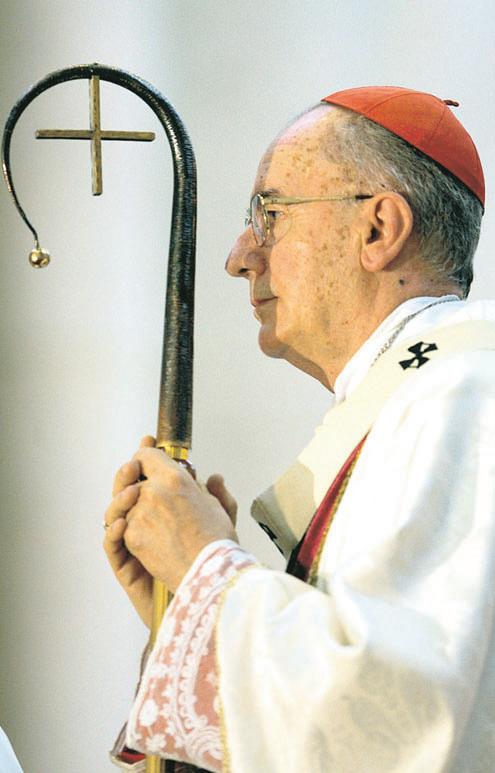
More recently, he made headlines when he criticized what he called a media “witch hunt” against the Catholic Church regarding clerical sex abuse. That might have lost him points among some U.S. observers, but did not hurt his standing with some other prelates around the world.
Brazilian Cardinal Claudio Hummes, the 70-year-old Franciscan who heads the populous Sao Paolo Archdiocese. The son of German immigrants, he was named bishop of Santo Andre in 1975 and gained pastoral experience among labourers, sometimes mediating between companies and unions.
He has strongly defended the church’s family and pro-life teachings.
In 2002, the late pope called him to preach his Lenten retreat - a sign of papal favour that often counts at conclave time. He is also a member of nine important Vatican agencies, more than any other Latin American cardinal.
A constant theme of Cardinal Hummes’ pastoral work has been protecting human dignity in areas of the family, labour and economic justice. At a Christmas fund-raiser for a church-run job-training centre, he said: “Jesus was born poor among the poor to call our attention to the social injustice that makes a portion of humanity increasingly poor, suffering, humiliated and excluded from sufficient access to the goods of the earth.”
As a bishop in the late 1970s, he opened the doors of churches as a refuge for those hunted by the military regime. When he headed the Archdiocese of Fortaleza in the 1990s, he strengthened his fame as a peacemaker, this time by opening the doors to new Catholic movements, such as the charismatics, without generating tensions among the more progressive basic Christian communities.
Cardinal Jorge Mario Bergoglio, a 68year-old Jesuit who has a growing reputation as a very spiritual man with a talent for pastoral leadership. An author of books on spirituality and meditation, since 1998 he has been archbishop of Buenos Aires, where his style is low-key and close to the people. He rides the bus, visits the poor and a few years ago made a point of washing the feet of 12 AIDS sufferers on Holy Thursday. He also has created 17 new parishes, restructured the administrative offices, led pro-life initiatives and started new pastoral programs, such as a commission for divorcees. He co-presided over the 2001 Synod of Bishops and was elected to
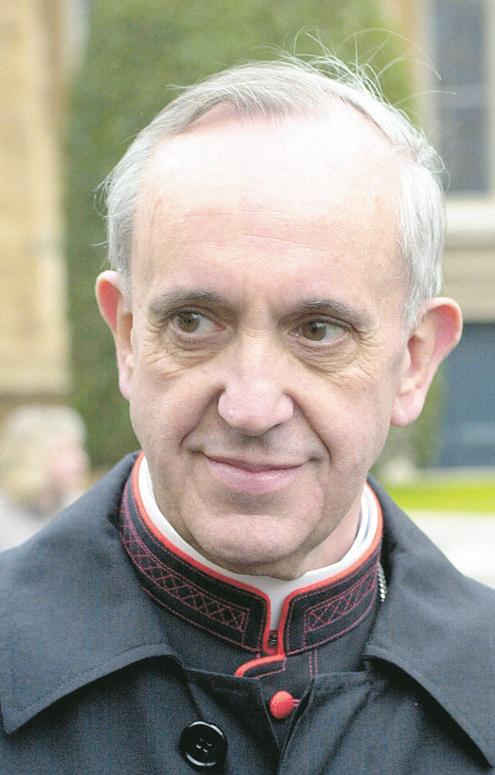
the synod council, so he is well-known to the world’s bishops.
Latin Americans at the Vatican also point to two sometimes-overlooked church leaders in Mexico, each of whom has a reputation as a social liberal and theological conservative in the Pope John Paul tradition: Cardinal Norberto Rivera Carrera of Mexico City, 62; and Cardinal Juan Sandoval Iniguez of Guadalajara, 72.
Among the African cardinals, one stands out: Cardinal Francis Arinze, 72, a member of the Ibo tribe, converted to Christianity as a child. He excelled as a young bishop in
northern Nigeria in a period marked by strife and hunger, before being called to the Vatican in 1985 to head the Pontifical Council for Interreligious Dialogue. He firmly adhered to Pope John Paul’s line on dialogue: It is essential in a shrinking world for religions to respect each other, but this can never diminish the church’s duty to announce Christ.
In 2002, Cardinal Arinze was promoted to head the Congregation for Divine Worship and the Sacraments -- only the second time an African cardinal has headed one of the nine top Vatican departments. In 2004, the congregation issued an important document taking aim at a wide range of liturgical abuses, and it has continued to exercise close control on liturgical translations.
During the congregation’s plenary session in March 2005, Cardinal Aloysius Ambrozic of Toronto said Cardinal Arinze ran the meeting briskly, keeping order but in a “democratic and fair” way.
“He’s simple, in an intelligent kind of way,” Cardinal Ambrozic said. Known for his blunt talk and sense of humour, Cardinal Arinze has close ties to conservative Catholic groups in the United States.
Other potential candidates can be found among the ranks of well-known as well as relatively unknown cardinals:
German Cardinal Joseph Ratzinger, the 77-year-old prefect of the Congregation for the Doctrine of the Faith, has been the Vatican’s doctrinal watchdog since 1981. In the eyes of many, he was the dominant curial figure in the last pontificate, and he would be an attractive choice to those who want an even clearer line against dissent inside the church.
Whether a candidate or not, Cardinal Ratzinger will certainly be an influential
Continued on page 6
(10th October 04 - 29th October 05)
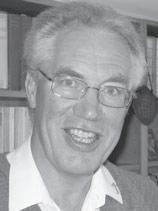




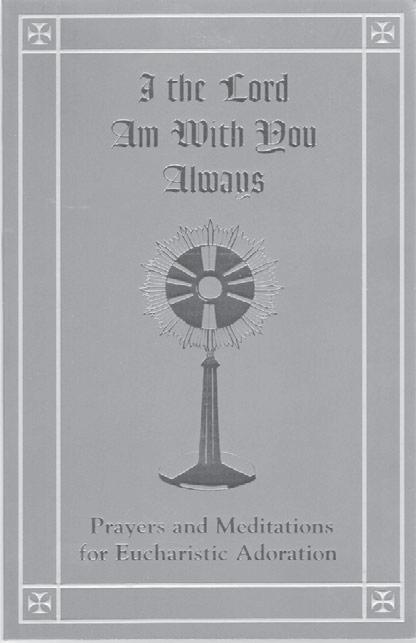

“The Church and the world have great need of Eucharistic Worship. Jesus waits for us in the sacrament of love. Let us be generous with him in going to meet him in adoration and in contemplation that is full of faith and ready to make reparation for the great faults and crimes of the world.”
(John Paul II: Dominicae Cenae 3)
“This book ... contains a wealth of prayers, thoughts and meditations, all centred around the Real Presence of Jesus in the Blessed Sacrament ....It is a privilege for us to be able to spend time before Jesus in the Blessed Sacrament. During those precious moments we sense Jesus' tremendous love for us. We bring to Him our joys and our sorrows, we talk to Him about the needs of those around us, and we ask for that deep conversion of the heart and mind that will make us one with Him ... I commend this book to all, especially to those who have rediscovered the beauty and joy of Eucharistic adoration..."
Most Rev. B. J. Hickey - Archbishop of Perth A beautiful set of Vatican Rosary beads will be sent to all those who give an additional charity donation of $10.00 or more to help the projects of Aid to the Church in Need for the persecuted Church in Sudan*. Please tick the box below if you would like to receive the Papal Rosary beads.

force, or “grand elector,” in the conclave. His position as dean of the College of Cardinals means he will preside over the daily congregations of cardinals and guide their discussions in the period leading up to the election.
Portuguese Cardinal Jose da Cruz Policarpo, the 69-year-old patriarch of Lisbon, who is seen by some as a potential bridge candidate between Europe and Latin America. A former academic and a prolific writer, the cardinal has produced articles and books ranging from Marian spirituality - reflecting the Portuguese devotion to Our Lady of Fatima - to the moral and spiritual challenges of modern society.
Shortly after being made a cardinal in 2001,
he participated in a meeting with Pope John Paul II and more than 150 other cardinals to discuss the Church and the third millennium. Afterward, he said the key conclusion was that “evangelisation is witness. The Church must give a radical witness of holiness, charity and poverty.”
In recent years, Cardinal Policarpo has made overtures to Muslims and Jews, emphasizing the common social agenda of all believers. But, as he told a Synod of Bishops in 2001, the Church cannot follow “a merely cultural and sociological notion of dialogue.” For the Church, he said, dialogue starts with faith in Jesus and in the Gospel. The Church listens to others after listening to the word of God, responding to questions and challenges by
living the faith more deeply and completely, he said.
Cardinal Nicolas Lopez Rodriguez of the Dominican Republic, 68, who organized the Church’s celebration of the fifth centenary of the evangelisation of the Americas in Santo Domingo in 1992. A past president of CELAM, he has emphasized evangelisation in the region and insisted that the Church’s concern for the poor must not be “exclusive or excluding.” A strong voice on family issues, he has been sharply critical of US-supported abortion and sterilisation campaigns, comparing them to the work of “death squads.”
Indian Cardinal Ivan Dias of Mumbai, formerly Bombay, is considered an Asian long shot among papal contenders.
A longtime Vatican diplomat who is fluent in 17 languages, the 68-year-old prelate was named to Mumbai in 1996. Cardinal Dias has endorsed the teachings of the controversial Vatican document, “Dominus Iesus,” saying the Church has no choice but to announce Christ as the only mediator between God and humanity. He is the type of pastoral leader the Vatican hopes will lead the evangelisation advance in India and the rest of Asia. Insiders add that the cardinal has a sense of humour and that his jokes made the late pope laugh.
In some 2,000 years of papal elections, only a handful have turned out as predicted, said a Vatican scholar.
That’s a lesson worth remembering as cardinals gather to elect a successor to Pope John Paul II, said Ambrogio Piazzoni, vice pre-
fect of the Vatican Library. Piazzoni, whose book, “History of Papal Elections,” recounts the twists and turns of conclaves through the centuries, said that only a dozen or so of the elections were foregone conclusions. And if surprises were common when the College of Cardinals had 30 or 40 members, they are much more likely with 117 voting cardinals from 54 countries
around the world, Piazzoni said in an interview. “When there were 35 cardinals, a group of 10 who were in agreement could control the situation. I think the high number of cardinals in the conclave has completely changed the situation,” he said.
Piazzoni said that despite their increased numbers, the cardinals know each other much better today
than they did in the past, before transportation became so fast and easy. “In the past, it often happened that cardinals would only get to know each other at the conclave. That’s no longer true - cardinals see each other quite often: at synods, consistories and other church meetings,” he said. In addition, while it was once rare for a cardinal to leave his diocese,

many of them now travel frequently to other countries and continents, forming relationships with fellow cardinals, he said.
“One of the biggest changes in the college is the knowledge the members have of each other,” he said. Piazzoni’s interest in papal elections began early. In the first conclave of 1978, when he was 27 and already working in the Vatican, he had Cardinal Karol Wojtyla on his own short list of “papabili”- but for the second conclave a month later he expected another Italian to be elected.
If Piazzoni has any predictions today, he is keeping them to himself. He does say, however, that cardinal-watchers in Rome tend to magnify the standing of Roman Curia cardinals and overlook those serving in residential dioceses.
“The Curia cardinals are hyperexposed, and we in Rome see them as the most important. But the cardinals arriving from archdioceses around the world will have a different perspective,” he said.
Piazzoni said the daily meetings of cardinals before the start of the conclave, called “general congregations,” will be important, especially in offering the cardinals over age 80 a chance for input. Only those who were under 80 when the pope died can enter the conclave.
He said he would not be surprised if one or more of the over-80 cardinals are asked to give a presentation at these sessions.
The general congregations will begin small but grow quickly, as cardinals arrive in Rome. With 183 cardinals in the college, these meetings could end up being lengthy, Piazzoni said. The recent history of conclaves has shown that by the time cardinals enter the Sistine Chapel, they usually have some clear ideas about candidates, Piazzoni said. That’s one of the reasons why the last five conclaves have lasted three or fewer days. He said he expects that to be the case this time, too. Although the rules allow the cardinals to move from a two-thirds majority vote to an absolute majority (more than half) if no pope has been elected after about 12 days, Piazzoni said, it is doubtful the conclave would go on that long.
“Keep in mind that even under Pope Paul VI’s rules, the cardinals could have decided, after a certain time, to proceed in another way to elect a pope. So the possibility (of a simple majority vote) already existed, though not in the exact same manner as today,” he said.
“The current rules foresee the simple majority option after more than 30 ballots, something that hasn’t happened for centuries. The idea that it would go on that long is highly improbable - though theoretically, anything is possible,” he said. - CNS
When cardinals gather to vote for a new pope, the attention of the world will once again focus on the Sistine Chapel, a setting resplendent with art and full of history.
From the outside, the only sign of the conclave proceedings will emerge from the smokestack on top of the chapel’s roof. Barely visible from St Peter’s Square, it is kept in the viewfinder of telephoto lenses until a new pope is elected and white smoke pours out. Inside, the cardinals will be surrounded by visual reminders of humanity’s destiny and the Church’s history.
The cardinals file into the Sistine Chapel, passing beneath Michelangelo’s frescoed interpretation of the beginnings of salvation history: creation, the fall of Adam and Eve and the flood. They will be flanked by paintings of God’s attempts to win back his people and save them: on one wall, the life of Moses; on the other, the life of Christ, including a painting of him handing over the keys of heaven and earth to St Peter, the first pope. Past the table where the cardinals will deposit their ballots and behind the main altar rises Michelangelo’s massive reminder of how each person will end his or her days: “The Last Judgment.” In his 2003 book of poems, “Roman Triptych,” Pope John Paul II wrote about participating in the two 1978 conclaves in the Sistine Chapel.
Aware of God’s love and human frailty, the Pope wrote, the cardinals must let themselves be led by God in their deliberations for a new pope.
“He (God) will point him out,” he said. Even after the Sistine Chapel was built and its decoration completed by Michelangelo
in 1541, not all papal elections were held in the chapel.
Pope Pius VII was elected in Venice, Italy, in 1800.
The four conclaves that followed (from 1823 to 1846) were all held in Rome’s Quirinal Palace, once the summer home of the popes and now the residence of the president of Italy.
While the art and fame of the Sistine Chapel make it almost unthinkable that a conclave would be held anywhere else, the chapel presents two small problems.
The first is space. At the 1978 conclaves that elected Popes John Paul I and John Paul II, some of the 111 participating cardinals complained that their seats were so close together they barely had room to breathe, let alone write a secret ballot. While the chapel has about 5,600 square feet of floor space, the room is divided by a marble and iron screen, halving the space for setting up tables and chairs in a way that allows all the electors to see each other and the altar. The smoke signal - the only form of communication between the electors and the outside world - also proved problematic in 1978.
A special stove and chimney were installed in the chapel in the middle of the 18th century.
The black smoke, which signals a ballot without a definitive outcome, was produced by burning the ballots with wet straw or, later, by adding chemicals. The white smoke that tells the world a new pope has been elected is produced by burning the ballots alone.But weather, atmospheric conditions and pollution all make the signal difficult to decipher. Most people in the past have relied on confirmation by Vatican Radio before looking for a good spot in St Peter’s Square to see the newly elected pope when he appears on the balcony of St Peter’s Basilica.
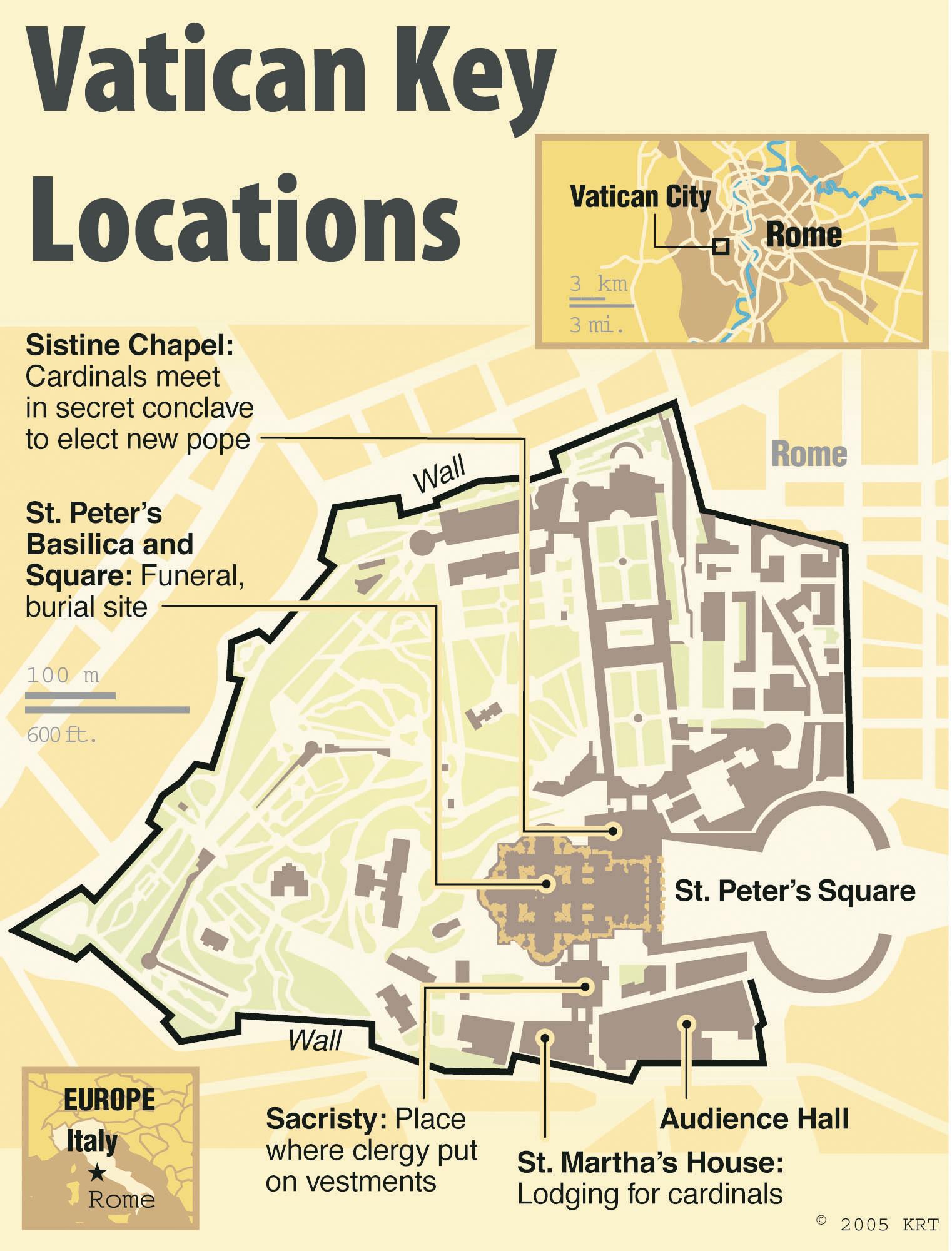
2005 marks a decade since the foundation of the Council of Christians and Jews. The Council was launched by its patron, the Governor, in 1995 at the Jewish Centre in Yokine. During the past decade it has undertaken a variety of activities to promote dialogue and understanding between Christians and Jews in Western Australia. The Council has led an annual service in November to commemorate the Holocaust on the anniversary of Kristallnacht. There have been regular education events, including lectures on the Jewishness of Jesus, by scholars from Australia and overseas; and introductions to the religious rituals of Christianity and Judaism. Some events have been held to bring the Jewish and Christian members of the Council closer together, such as trips to the abbey at New Norcia, Quiz Nights, and kosher barbecues. A Passover Seder for Christians and Jews was held in the early years and will be again this year. This experience gave its participants greater insight into why the Council opposes the adoption of this sacred Jewish meal by Christians.
This year the Executive plans to
mark this event with a major push to increase membership and to use funds to promote the Council in substantial ways. However, at their Annual General Meeting the foundation Chairperson of the Council, the Revd Dr Rowan Strong, pointed out to members that the prospects for on-going existence after 2005 are not high. Membership was declining and unless something is done to reverse this the Council may well be dissolved at the AGM in 2005 unless growth occurs.
Dr Strong maintained that such an outcome would be a blow to the solidarity of believers in God in our society. “At a time when the lines between belief and unbelief maybe sharpening in our society we need more than ever to be believers who are committed to understanding and tolerance and dialogue. If the commitment to these values, which the Council of Christians and Jews Western Australia affirms, is not maintained then we are in danger of allowing other forms of religious belief to dominate our public life. Not all religious believers are in favour of mutual understanding and dialogue about our similarities and, more significantly, our differences
as believers in a common God. There are religious believers who thrive on division, hatred, sectarianism, and intolerance. We all have such religious believers in our communities and they certainly exist in other religious communities as well. It is vital we do not allow such attitudes to become representative of religious life here in Australia.”
During 2005 the Executive of the Council will be working to ensure the ongoing survival and work of the Council of Christians and Jews in Western Australia. Its planned schedule of events will include engagement with Jewish-Christian relations in their ritual, traditional, cultural, and intellectual dimensions. It is clear from the good attendances at events over the past decade that the work of the Council has many informal supporters among the Jewish and Christian communities of Perth and Western Australia. But that support needs to be translated into active membership.
Those who want to support the work of ChristianJewish dialogue in this way, or would just like to know more of the Council of Christians and Jews in Western Australia can contact the Secretary of the Council, Mrs Valerie Scott, on 9246 3170.

Although Pope John Paul II leaves behind a legacy of pastoral accomplishments, his successor will also face a number of challenges in areas of Church governance, missionary strategies and priestly ministry.
The challenges are expected to loom large in the cardinals’ daily discussions ahead of the conclave, where they will assess Church priorities and begin to look at potential papal candidates.
Based on interviews, speeches and cardinals’ meetings in recent years, here are six themes that many see as crucial for the next pope:
■ Collegiality and Church governance. At almost every major meeting of bishops and cardinals in recent years - most notably at the last discussion assembly of cardinals in 2001 - some of the most interesting debate was on how the universal Church relates to local Churches.
It is clear that some bishops are not completely happy with the level of cooperation they receive from offices of the Roman Curia. They have asked for more input on things like selection of bishops and preparation of Vatican documents and more flexibility in matters like liturgical translations.
Some think the Synod of Bishops should be overhauled to make it a more open and influential forum for discussion. Others note that Pope John Paul was never much of a hands-on manager of Vatican affairs; they say the Church would be well served by someone able to pull the reins of the Roman Curia when necessary.
■ “Clash of civilisations.” This clash is not the tensions between the Muslim world and the West, but what cardinals see as the growing gap between popular Western culture and traditional Christian values.
Cardinals meeting in 2001 spoke candidly about the difficulty of proclaiming the Gospel in pluralistic societies where religion is no longer passed on from generation to generation. The phenomenon is internal as well as external, since many Catholics do not understand or accept Church teachings on some controversial issues.
Church leaders say the problem is especially evident in European and North American society; they point to legal abortion, a growing acceptance of euthanasia and legislative efforts to approve same-sex marriage.
But the issue also resonates among cardinals from developing countries, where sterilisation and contraception campaigns have drawn sharp Church criticism. Some fear globalisation is helping to spread secular values to the Third World.
Many Church leaders believe Pope John Paul did a good job spelling out the moral arguments behind Church teachings and drawing clear lines on dissent. They say the challenge that remains is to educate the Catholic laity and encourage them to accept and live those teachings, which will ultimately have a greater social impact than pronouncements by the hierarchy.
■ Mission, witness and dialogue. In the second half of Pope John Paul’s pontificate, the Vatican emphasized that evangelisation means proclaiming Jesus Christ as the unique saviour, even in places where Christians are a small minority.
Many local bishops would place the emphasis elsewhere - on dialogue and witness as the most effective ways of communicating the Christian faith. That is especially true in Asia, a continent considered prime evangelizing terrain but where efforts to date have been somewhat disappointing to the Vatican.
The debate has taken on a new dimension in the wake of the September 11, 2001, attacks and the so-called “war on terrorism,” as minority Christian communities try to achieve or maintain legal rights in countries where Muslim fundamentalism is spreading.
Given all that, the cardinals’ assessment on this issue could have important consequences
for the future path of interreligious and ecumenical dialogue.
■ Ordained ministry. Under Pope John Paul, the pastoral burden on priests increased dramatically; there was one priest for every 1,800 Catholics in 1978, and about one priest for every 2,700 Catholics in 2005. The ratio was even higher in many developing countries, where some Catholics have had to go without Mass or the sacraments for weeks at a time.
The situation has led a number of bishops to ask that the Vatican consider relaxing the priestly celibacy rule in the Western Church. Few if any Church leaders believe that the next pope will consider women’s ordination as an option, since Pope John Paul ruled it out in a definitive way.
A separate but related issue is the selection of priesthood candidates, which drew particular attention after the sex abuse scandals of recent years. Two Vatican documents long under preparation - one on psychological screening of seminary candidates and another on homosexuality - were left in suspension by the pope’s death.
■ Bioethics. The moral questions raised by the rapid advances in science and technology are expected to multiply during the next papacy. While Church teaching on the sanctity of life is clear, some of the issues - such as genetic therapy - involve complex questions of personal identity and biological integrity that theologians are only beginning to examine.
Pope John Paul responded by identifying practices and attitudes that threaten human life and by creating the Pontifical Academy for Life. A new pope may want to raise the academy’s profile and increase the level of expertise at the Vatican.
■ Parish life and lay movements. Lay movements came into their own under Pope John Paul II, growing in numbers and influence. But many bishops have questions, chiefly among them the ability of such movements to integrate themselves with local parish life.
The tension was perhaps best illustrated in the pope’s final year, when he singled out the Legionaries of Christ for high praise even as some US bishops were banning the organisation’s activities in their dioceses.
The cardinals’ discussions on this topic are expected to be lively, and the positions taken by potential papal candidates will be given careful attention by those going into the conclave. - CNS


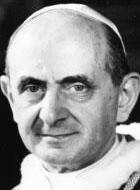
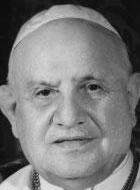
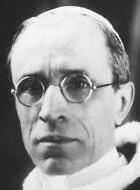

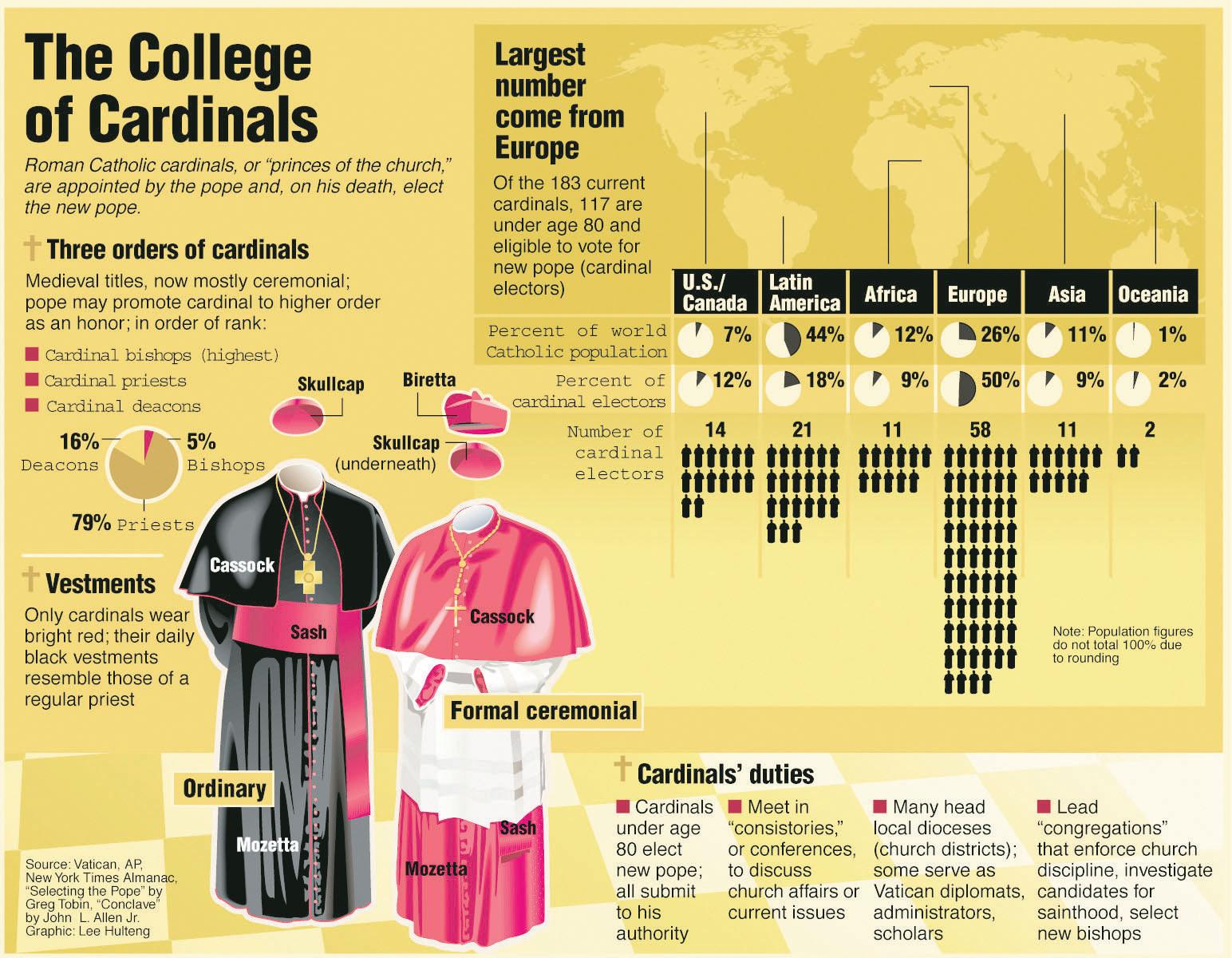
When Pope John Paul II rewrote the rules for the coming conclave, he emphasised repeatedly that the papal election and everything about it must remain secret.
The cardinals and those assisting inside the conclave or at the dormlike building where the cardinals will stay are to take a solemn oath to observe “absolute and perpetual secrecy” about the election. Violation of the oath can mean excommunication.
They are also to promise not to use any audio or video recording devices. The Sistine Chapel was to be swept for hidden cameras or microphones - a precaution introduced by Pope Paul VI.
Notes from the conclave are to be burned with the ballots, and the tally of each vote is to be sealed and delivered to the new pope for safekeeping.
The exhortation to secrecy is mentioned 17 separate times in the late pope’s 1996 apostolic constitution, Universi Dominici Gregis (“The Shepherd of the Lord’s Whole Flock”), which updated conclave rules.
An interesting sidelight on the forthcoming papal election is the late Pope’s comment in February 2002 that his successor had not yet been made a Cardinal.
He made the comment when meeting a group of Argentine bishops in Rome.
One of the bishops thanked him for making the Archbishop of Buenos Aires, Jorge Mario Bergoglio, a Cardinal.
“He would make a good successor to you, Your Holiness,” the visiting bishop said.
The Pope calmly replied, “My successor has not been made a Cardinal yet.”
Obviously, Pope John Paul II could not be held to that remark. He could have been having an inspired moment, or he could have been firmly deflecting any talk about his possible successor.
However, if it were an inspired moment, it would mean that the new Pope would come from the 30 Cardinals announced on September 28 and installed on October 21 2003, during the Pope’s 25th anniversary celebrations in Rome.
The 30 include Australia’s Cardinal George Pell, and six Italians among a total of 14 Europeans.
Collectively they represent the truly catholic or universal nature of the Church, and include representatives from such places as Nigeria, Guatamala, Vietnam, Japan, Ghana and Sudan.
One of the most interesting is Cardinal Telesphore Placidus Toppo, of the relatively small archdiocese of Ranchi in India. Cardinal Toppo comes from a Tribal background, the most oppressed people in India, and has been outspoken about the need for bishops and the Church in general to be associated with the poor.
He was made a Cardinal by Pope John Paul II in 2003 and was appointed as one of four cardinals to coordinate the synod of Bishops due to be held in October this year to wind up the Year of the Eucharist. He has previously called for Bishops to live with the poor as Jesus did.
There has always been great curiosity about the inside story of conclave voting. After the 1978 conclave that brought Pope John Paul to the papacy, books were written with detailed descriptions of the shifting numbers of votes in each of the eight ballots before he was elected.
Much of the writing was speculation, but some of it was based on conversations cardinals had with close aides or friends in the excitement of the immediate postelection period.
Pope John Paul apparently did not want that to happen again.
The section banning electronic recording or communication devices expands on earlier precautions against the potential bugging of the conclave. Sophisticated surveillance equipment will be used to scan the area in and around the Sistine Chapel.
But because this time the cardinals will be staying at the Domus Sanctae Marthae, a Vatican building a kilometre away, it may be more difficult to police electronics - including devices now routinely carried by some cardinals, such as cell phones, pagers, Blackberries or Pocket PCs with wireless capability.
The rules order that the Domus Sanctae Marthae be kept off-limits to unauthorised personnel during the conclave, and especially that no one approach the cardinals when they are being transported to the Sistine Chapel. The bus driver, presumably, will not be allowed to chat with his passengers.
The cardinals are warned against communicating with anyone during the conclave - by writing, telephone or any other means - except in cases of proven urgency. They are barred from reading newspapers or magazines, listening to the radio or watching TV.
The ban on divulging information related to the papal election even extends to the meetings the cardinals have before the conclave begins. That could make cardinals much less willing to talk to reporters in the days before they enter the Sistine Chapel.
All this does not mean the full story of the conclave will never be told. The rules say that once elected the new pope can lift the secrecy provision and let the cardinals tell the inside story.
Very few at the Vatican expect that to happen.
- CNS

With the death of the Pope, the tasks of organising a papal election and overseeing the day-to-day needs of the Church fall to Cardinal Eduardo Martinez Somalo.
The 78-year-old Spaniard has been “camerlengo” or Chamberlain of the Holy Roman Church since 1993, although the job was basically just a title while Pope John Paul II was alive.
Now Cardinal Martinez’s responsibilities range from ensuring that nothing is touched or tampered with in the papal apartments to selecting the technicians who will sweep the Sistine Chapel for electronic bugs, cameras and recording devices.
As Chamberlain, Cardinal Martinez is the only person who may authorise the photographing of the Pope’s dead body, but only for documentary purposes and with the body dressed in pontifical vestments.
In the Vatican’s employ since 1956, Cardinal Martinez worked under five popes. In February 2004 he retired as prefect of the Congregation for Institutes of Consecrated Life and Societies of Apostolic Life.
From 1979 until his appointment to the College of Cardinals in 1988, he was one of Pope John Paul’s closest aides, serving as “sostituto,” or assistant, secretary of state.
As Chamberlain he took temporary charge of the Church’s affairs
until a new pope is elected. His first duty was to certify the death of the Pope.
According to rules set by Pope John Paul in 1996, Cardinal Martinez was to seal the Pope’s study and bedroom and take possession of the Apostolic Palace and papal palaces at St John Lateran in Rome and at Castel Gandolfo, south of the city.
In consultation with senior cardinals, he makes the arrangements for the Pope’s funeral and sets the date for the beginning of the meetings necessary to prepare for the conclave.
The Chamberlain - together with Cardinal Angelo Sodano, Pope John Paul’s secretary of state, and Cardinal Edmund Szoka, governor of Vatican City State - is responsible for preparing the cardinals’ rooms in the Vatican’s Domus Sanctae Marthae guest house.
While the office of pope is vacant, the Chamberlain presides over what are called “particular congregations of the cardinals.” In addition to the Chamberlain, the particular congregations include three cardinals chosen by lot. The Chamberlain’s assistants serve for three days, then are replaced by three other cardinals chosen by lot.
The group of four deals with “ordinary affairs” not requiring the discussion and consent of the entire College of Cardinals, which meets under the presidency of the college’s dean, Cardinal Joseph Ratzinger.
The particular congregation is the only body empowered to decide

whether a reason exists for anyone in the conclave to communicate with anyone outside the gathering.
Cardinal Martinez and his three cardinal assistants also are responsible for giving approval to the individuals chosen to serve as priestconfessors, doctors and domestic staff for the cardinals in the conclave.
The Chamberlain, with two mas-
ters of ceremonies, is responsible for administering an oath of secrecy to the non-cardinals whose service is needed by the conclave.
Under Pope John Paul’s 1996 rules, Cardinal Martinez is required to write up a report on the results of each ballot, place it in a sealed envelope and give it to the new pope after he is elected.
If after about 30 ballots, one papal
candidate has not received twothirds of the votes, the Chamberlain presides over the discussion of whether or not the cardinals want to move to a simple majority vote. Although his role in the preparation and work of the conclave is key, the Chamberlain’s duties end inside the Sistine Chapel with the election of a new pope. - CNS
Many people have been asking questions related to the election and role of the Pope. Hopefully, the following general background will be helpful.
■ By Bishop Gerard Holohan of BunburyThe role of a Pope: Successor of St Peter
The history of the Popes begins with Apostle Simon, son of John, the one Jesus called to lead his Church after his Ascension into heaven. In ancient times, a person’s name was changed when given a new role and relationship with others.
Jesus changed Simon’s name to Peter (Petros – the Greek word for rock) [Matthew 16:18]:
So now I say to you: you are Peter and on this rock I will build my community (Church). And the gates of the underworld (powers of evil) shall never overcome it.
In ancient times, the ‘keeper of the keys’ of a house exercised the master’s authority. Jesus said to Peter [Matthew 16:19]:
I will give you the keys of the Kingdom of Heaven: whatever you bind (forbid) on earth shall be bound in heaven; whatever you loose (permit) on earth shall be loosed in heaven.
Jesus warned Peter that he would be a tempted man. However, his role included that [Luke 22:32]:
…once you have recovered, you in your turn must strengthen your brothers.
By washing their feet at the Last Supper, Jesus made it clear to his
Apostles that theirs was a role of service in imitation of him. Peter’s role was to be one of service in the Church [Luke 22:26]: …the greatest among you must behave as if he were the youngest, the leader as if he were the one who serves.
There is much more in the scriptures about Peter’s role than these points. For further discussion, these foundational quotes would need to be nuanced in the light of others about Peter, the Church and other roles within the Church.
The Ministry of Pope
Every Pope is a successor of St Peter. He exercises the ministry conferred first by Jesus upon Peter. He inherits the special spiritual gifts and responsibilities Jesus himself first gave to Peter.
Pope John Paul II was the two hundred and sixty fourth Pope of the Catholic Church. He was the latest in a line that stretches back over the past two thousand years from Peter himself. Over that period, there have been a few Popes who failed to live the ideals and responsibilities of their Office.
The Church certainly suffered as a result of this. However, it continued to grow because of Jesus’ promises, such as the one above that evil will never overcome the Church, and his farewell promise [Matthew 28:20]:
I am with you always; yes, to the end of time.
Teaching the Gospel today
A Pope’s role is to lead the Church across the world in proclaiming the Gospel of Jesus Christ. This includes calling all to greater conversion, and by challenging any
ideas or practices within or outside the Church that are contrary to this Gospel.
Over the past two thousand years, this has often led to controversy as Popes have challenged trends and practices in different societies. We think of Pope John Paul’s challenge to world-wide social injustices, apartheid, and the Iraq war. If the Gospel had not been challenging, Jesus would not have been crucified.
Limits on a Pope
Like Peter, a Pope can teach and do only what can be shown to be within the intention of Jesus. The sole criterion for establishing this is the Word of God in Scripture and Tradition.
Jesus commanded, for example [Matthew 28:20]:
… teach them to observe all the commands I gave you.
The Pope has no authority, for example, to change the Fifth Commandment – ‘You shall not kill’. Hence, no Pope can agree to the deliberate killing of the unborn (abortion). Nor can he agree to the deliberate killing of the sick, the disabled or the elderly (euthanasia). The same is true of the Sixth Commandment. So no Pope will be able to condone sexual relationships outside marriage.
Some commentators have suggested that Pope John Paul II was inconsistent – ‘liberal’ on social justice issues, and ‘conservative’ on other doctrinal and moral matters. In fact, he consistently applied the same Gospel to all issues. He could not pick and choose among the teachings of Jesus any more than we can.
The Church today
The new Pope will be called to lead a very different Church from that Peter would have known:
● it is growing at a rate between 3-4% greater than the world population (some say the Church grew by 250 million during Pope John Paul’s years of service)
● around two thirds of Catholics live outside the western industrialised world
● within the western world, religious practice among Catholics has been in decline since World War II
● the Church is growing, despite this decline, in other parts of the world.
World-wide, major challenges the Church (and so a new Pope) will face include:
● continuing the renewal of the Vatican II Church
● defending the sacredness of each human life and the dignity of every human person
● promoting social justice in a world of extremes of wealth and poverty
● dialogue with other world religions
● ecumenism between Christian Churches
● proclaiming the Gospel in a world of social, scientific, techno logical, communication and other change.
In the words of Pope John Paul II, ‘It is not possible to go on living on an island of abundance surrounded by a sea of suffering’.
Western World
The direction of many current social trends conflicts with Gospel values. Western trends include materialism and individualism, and
‘what can I get out of things?’ These conflict with the spiritual and community values of the Gospel, as well as the Gospel call to selfless love. Consumerism, and the priority of material and social success, conflict with seeking to fulfil the deeper needs of the human heart. These are a few examples. Challenges for the Church include:
● renewing how the Gospel is proclaimed in Western cultures
● affirming and strengthening the faith of Catholics who strive to live daily as Jesus taught, even though this conflicts with some western social trends and values
● remaining faithful to the whole Gospel of Jesus Christ in the face of conflicting trends and the tendency for people to see the Gospel as a smorgasbord which they can take or leave.
The human side of being Pope
Whoever is elected Pope will live and work in an apartment for his whole pontificate. It seemed to me when I visited Pope John Paul a bit like living under ‘house arrest’ when he was in Rome. Anytime the new Pope leaves the Vatican, he will be surrounded by staff and security.
There will be no slipping out to see friends, to go to a movie or to take a drive to the beach. From a human perspective, election will involve much sacrifice for whoever is elected Pope.
Let us pray
This, then, is a time for prayer. Let us all pray for the conclave, and for the new Pope in our families and parishes.
Papal awards to two retired West Australian Members of Parliament were presented last Friday night in a ceremony that coincided with the Pope’s funeral in Rome.
Archbishop Hickey said that it was entirely coincidental, but appropriate that such presentations should be made at such a momentous time.
The Hon Phillip Pendal, formerly Independent MLA for South Perth, and Mr Bill McNee, formerly Liberal MLA for Moore, were awarded the Croce Pro Ecclesia et Pontifice (Cross for the Church and the Pontiff).
The Pope made the awards shortly before Easter and they were received in Perth before his death.
The awards recognised the two men’s fidelity to Catholic principles and values in the world of politics, and particularly their com-
mitment to the Gospel of Life during long debates in Parliament and the community on life issues such as abortion, the destruction of living human embryos for medical research, medical care of the dying and related issues.
Archbishop Hickey said the Pope’s recognition of Phil Pendal and Bill McNee was an affirmation that Catholics could remain true to their faith at all levels of community life.
Personal integrity was the key word in understanding the awards, he said.
In October 2000, on his own initiative the Pope had appointed St Thomas More the patron saint of statesmen and politicians.
‘Integrity’ was the word that best described St Thomas More who rose from humble beginnings to become a judge, an MP, and finally the Lord Chancellor of England under King Henry VIII.
He always took his moral values into his public life, whether dealing with individuals or the highest office
in the land. His integrity also cost him his life when he refused to take an oath of allegiance that required support for Henry’s divorce and second marriage and his decision to break away from the Pope and put the Church in England under his own authority. St Thomas More was beheaded with Archbishop St John Fisher.
The Catholic hierarchy in England was shattered and was not allowed to be reinstated until 1850, some 300 years later.
The two local MPs honoured by the Pope also took their Catholic moral values into their public life and explained and defended them in ways that opened many minds.
“Others who stood with them should understand that they, too, are being recognised in these presentations,” the Archbishop said.
“They lost the battle over abortion, but they have not lost the war. There is deep concern around Australia that things have gone too far, and that is largely the result of the strong defence of life that was

presented in Western Australia in 1998,” he said. Among the crowd of family, friends, helpers and supporters at the presentations were
Phil Pendal grew up in a family of mixed religion and mixed politics, but never had any doubt about his own religion or politics.
His mother Marie (nee Buswell) was a staunch Catholic and a strong supporter of the Labor Party, as were most of the Buswells in and around Bunbury.
His father, A.H. (Reg) Pendal, a builder in Bunbury, was an Anglican who was very supportive of his wife raising their children as Catholics, and very involved in the Liberal Party.
Phil says he was never going to be anything but a Catholic and a Liberal, but believes that growing up in a family where politics was part of the staple diet taught him respect for the integrity of people holding opposing points of view.
This, combined with strong formation in his many years in the YCW, was a source of strength to him in the vigorous parliamentary battles on life issues which characterised the last seven years of his parliamentary career – the years that earned him his Papal honour.
“I was always able to remember that Jesus told us to preach the Gospel to every creature, but did not tell us to belt the tripe out them until they agreed with us,” he said.
Phil Pendal was born in St John of God Hospital in Bunbury on February 4, 1947. He was educated at St Joseph’s Convent (now the art gallery) and Marist Brothers College (now Bunbury Catholic College) before the family moved to Perth in 1959.
He completed his schooling at St Francis CBC East Victoria Park (now part of Ursula Frayne College) doing his Junior Certificate in 1961. His first job was with the Olympic Tyre and Rubber Company and then he joined the Commonwealth Bank. While working with the Bank in Boulder in 1963-64, he began studies for his matriculation with a view to doing law, an area that had always appealed to him, but in 1965 he applied for and won a cadetship in journalism with WA Newspapers.
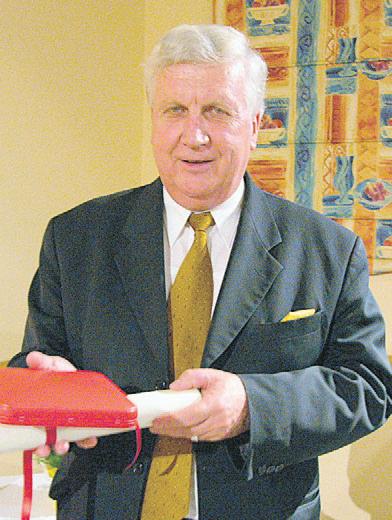
1977 election, but lost the ballot by one vote. He was elected to the Legislative Council as a Liberal in 1980 and thus began a parliamentary career that continued until February this year. His first encounter with life issues in Parliament occurred in 1984 when the Burke Government introduced legislation to end capital punishment. He crossed the floor in the Legislative Council to vote with the Government and two other Members followed him, Peter Wells and Tom McNeill, to give the Government the numbers to pass the Bill.
them frequently. “We lost the vote comprehensively, but for the first time in a generation pro-life and anti-abortion issues were put before the Parliament and the people,” he said.
“Abortion had been entrenched in people’s minds for a generation because of the illegal but unchallenged practice of it, but I think we were able to get many people to see that there is more to it than a mere routine medical procedure.
intellectual prowess and clarity of thought would take people into new and deeper understandings of what was at stake.”
Phil Pendal said he had retired this year partly because he felt he was in danger of passing his use-by date, and partly because he wanted to pursue other interests.
He began his new career with the South Western Times in Bunbury (owned by WAN) in January 1966, and in March 1968 he was posted to the Manjimup-Warren Times as editor and one-man staff.
In the same year he met Maxine Mayrhofer, a teacher at Kooinda Primary School in Bunbury, and they married in Perth on August 23, 1969.
Phil had been transferred to Perth’s evening newspaper, the Daily News (also owned by WAN) in March 1969. There his career flourished and in 1970 he was appointed State Political Roundsman, covering the last 15 months of Sir David Brand’s Liberal Government, the three years of John Tonkin’s Labor Government (1971-74), and the first year of Sir Charles Court’s Liberal Government (1974-75).
In 1975, he was asked to take on the role of travelling Press Secretary for Sir Charles and went with him to Japan on Sir Charles’s first overseas trip as Premier. When not travelling, he worked as Press Secretary for Minister for Justice Neil McNeil, Minister for Local Government, Urban Development and Town Planning Cyril Rushton, and Minister for Labour and Industry Bill Grayden.
During this period he became active in the Liberal Party and sought endorsement for the Legislative Assembly seat of Clontarf for the
In the 10 years in Opposition from 1983 to 1993 he was Opposition spokesman in a number of areas and it was generally considered that his handling of the environment portfolio had a significant effect on the green vote in the 1993 election won by Richard Court. At that election, he retired from the Legislative Council and won the Assembly seat of South Perth in succession to Bill Grayden.
It came as a surprise to many people that he was not named in Richard Court’s Cabinet after that election.
It came as a surprise to many people that he was not named in Richard Court’s Cabinet after that election.
In 1995, he resigned from the Liberal Party because of its failure to take appropriate action to correct pre-selection rorts and other internal problems. He won South Perth as an Independent in 1996 and 2001.
In 1998, during the abortion law debate, he became the unofficial convenor of a diverse group of MPs and lay advisers who worked to defeat the abortion law and to salvage what was possible from the wreckage.
It was the most intense debate seen in Parliament, occupying the time of Parliament almost to the exclusion of all else, and with almost all MPs speaking, many of
“By the time the embryonic stemcell debates came around, many people, who still did not support us, were more open to consideration of the claims of human life in a living embryo.
“The period 1998-2004 was a watershed time for consideration of life issues in Parliaments around Australia.
“The supporters of life lost, but I think the debate is far from over. People are now more aware, reluctantly in many cases but aware nonetheless, that embryos and babies in the womb are alive and human, and their claim to life will have to be considered.”
He said that Fr Walter Black and Fr Joe Parkinson, of the L.J.Goody Bioethics Centre had played significant roles in the ongoing debates.
“We could introduce them to individuals and groups, and their
Last year, he co-authored with David Black a 100,000-word history of both Houses of Parliament called “House to House”. This year he is working on a history of the South Perth Community Hospital for its 50th anniversary next year.
He is also working on a new book with David Black to be published by February 2007 for the 175th anniversary of the first Legislative Council meeting, and is collaborating with Joe Poprzecny on a book about US President Hoover’s involvement in the WA mining industry.
Phil and Maxine Pendal have three adult children, Sasha, who is deputy director of the Lions Eye Institute, Simon, an architect, and Narisha who is married to Luke Garswood, and has two children, Oscar and Mayr.
Mrs Pendal still puts in one day a week at St Columba’s school in South Perth.
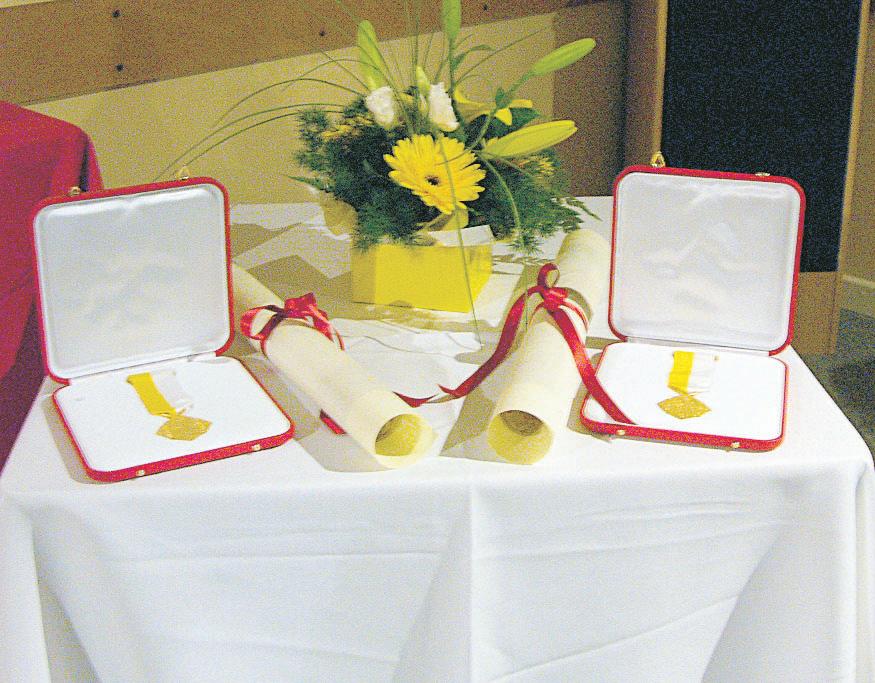
 ■ By Hugh Ryan
■ By Hugh Ryan
Bill McNee’s first direct link with Pope John Paul II came during the Pope’s visit to Perth in November 1986 when he, his wife Lesley and their four children were chosen as the representative family to receive communion from the Pope at the Mass at Belmont Park. At that time Lesley McNee was on Archbishop Foley’s Pastoral Council, of which she was Vice-President for part of
her six-year term. Bill McNee was born at Nurse Bessie C. Reid’s private hospital in Wyalkatchem on April 28, 1933, the eldest of four children of Bill and Lillian McNee.
His mother was a staunch Catholic and his non-Catholic father was very supportive of their religious upbringing and of the Church.
Bill McNee Snr farmed at West Yorkrakine and young Bill went to the West Yorkrakine primary school until it was closed in 1945 when he
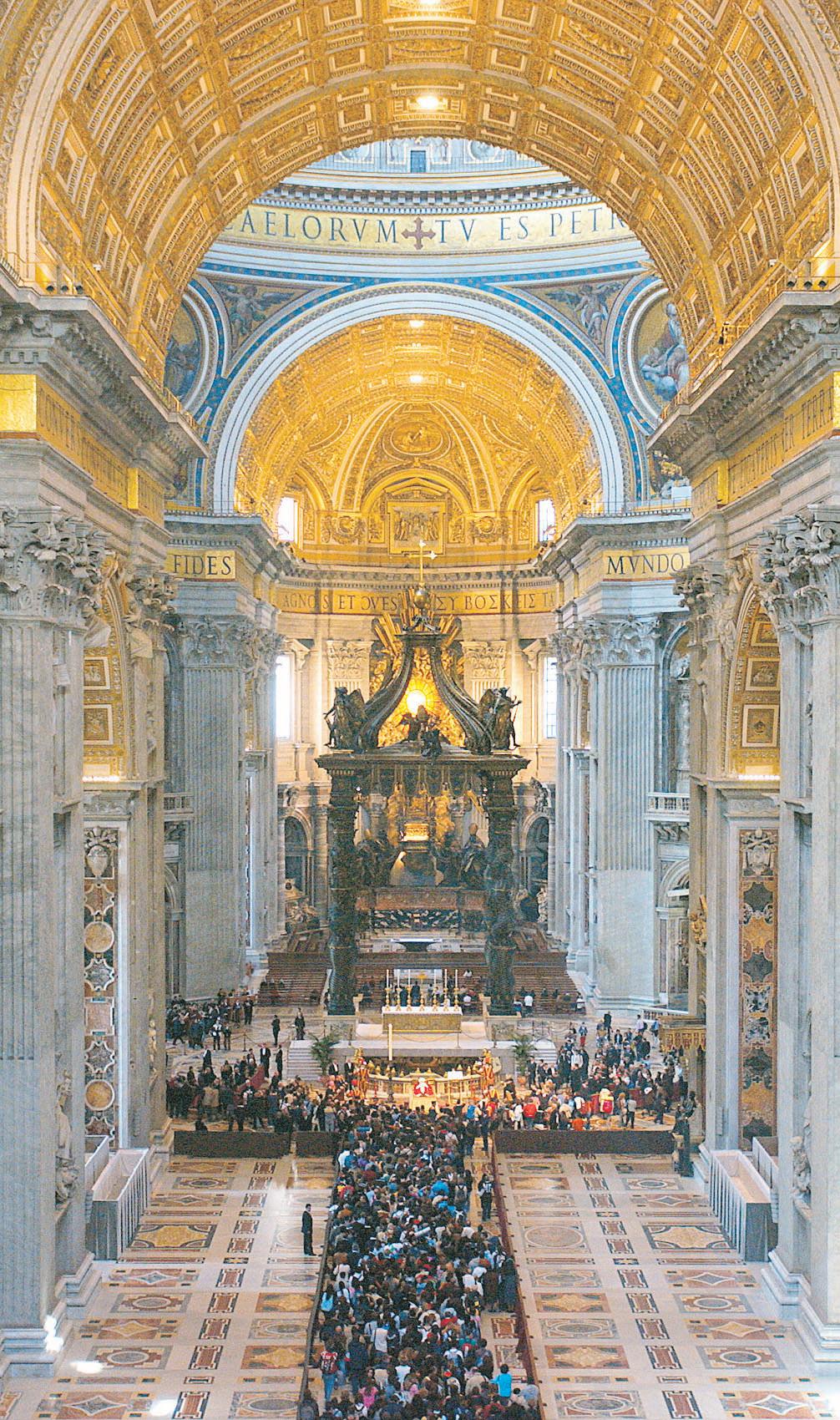
vice on the Koorda Shire Council, including three years as Deputy President and six years (1973-79) as Shire President. He said he enjoyed his time in local government because they had an energetic team of people who were willing to create new solutions for problems.
They solved a housing shortage in the town by using the shire’s access to finance to build 16 houses which people paid for by self-supporting loans from the council. They tried to make Koorda a service centre as a defence against the approaching rural decline, and although it did not all work out, much of it did.
In 1967 he stood against Ray McPharlin (later a Deputy Premier) in a by-election for the seat of Mt Marshall, but considers himself fortunate to have lost it. “Being in Parliament wouldn’t have worked when we were starting a young family,” he said.
“I knew it can’t be right, but there we were in the middle of it with many people arguing with great sincerity for the death of babies in the womb.
“I was in hospital for most of the embryonic stemcell debate, but the problem is the same.
“When you start taking lives just because you can’t see them, life itself becomes cheaper and there is real danger for society – for old people, for eugenics and so on.
“If there was a good side to these life debates it was that Party lines were removed and it was clear that the supporters of life were not all on one side of politics and not all of them were Catholics.
“The abortion and stemcell laws represent a real change in direction for our society, and we haven’t seen the end of it. The damage does not become apparent until years down the track.”
went to the Wyalkatchem primary school for six months, followed by four years at Aquinas College till 1949 when he went home to the farm. His first experience of community organisation came through the Junior Farmers, a significant organisation for the personal and social development of young people throughout the rural areas of the State. Then in 1959 he and a group of friends formed a Liberal Party branch in Wyalkatchem.
In the early sixties he began an 11-year stint on the board of the Wyalkatchem hospital, including seven years as chairman, during which time they persuaded the government to build a new hospital.
In 1964 he married Lesley Barnett, daughter of Catholic farmers at Walgoolan, east of Merredin, and the couple moved onto a family farm at Koorda and have been there ever since. Bill and Lesley first met in Junior Farmers, but she travelled to New Zealand for a twoyear working holiday and worked for a pathologist in Perth after her return. They met again at a dance in Merredin and married a year later.
The couple have twin sons, two daughters, one grandson, and three more grandchildren on the way.
In 1966 Bill began 16 years of ser-
In 1980 he made his second unsuccessful attempt in Mt Marshall, but in 1983 he won the seat. In 1986 he lifted his primary vote from 33 per cent to 46 per cent, but lost to the National Party on Labor Party preferences.
In 1989 a redistribution put about half of Mt Marshall into the seat of Moore and his friend Bert Crane MLA decided to retire from politics, so Bill stood for Moore, won the seat and held it until his retirement this year.
One of his parliamentary colleagues during this period was the Hon. Barbara Scott, Liberal MLC for South Metropolitan Province, who is his wife’s sister. He said he would not have been able to sustain his parliamentary career if it were not for his wife’s great skill in managing the farm, looking after the finances and keeping the family together. She also took an active part in community life, particularly in the Agricultural Society. She was largely responsible for introducing the craft of making corn dollies into Koorda, and the corn dolly festival is now a highlight of the annual show. It is also the origin of the Koorda Shire emblem. Bill McNee said the 1998 abortion debate was the most intense period he experienced in Parliament.
“I was utterly surprised that we were even moving in that direction,” he said.
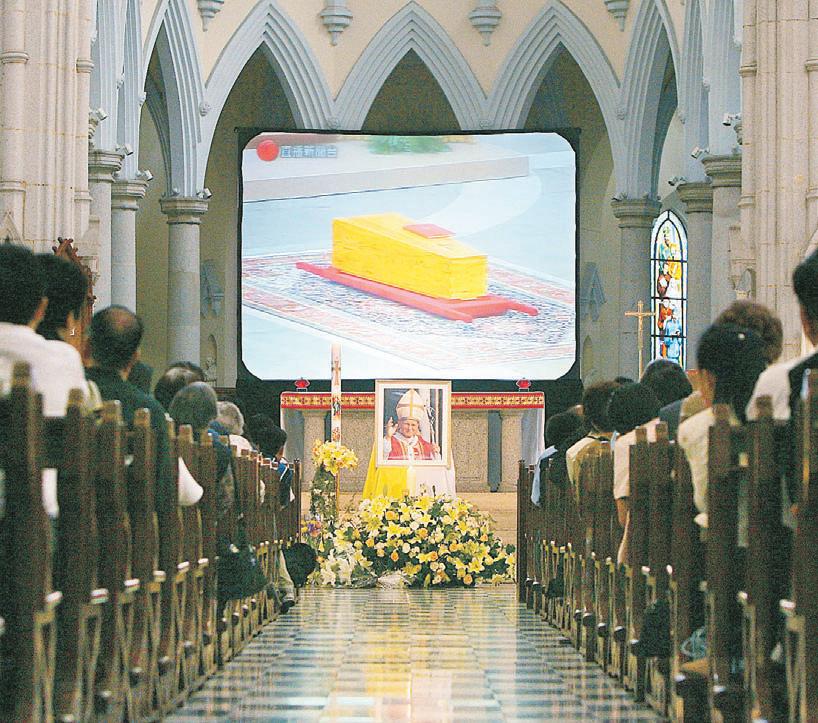
Bill McNee was known in and out of Parliament more for his integrity than his polished oratory.
He said he learned it early from his father.
He used to clean the blackboard at the end of the school day and once he took home a piece of chalk, a scarce commodity for teachers during the war. His father made him take it back and deliver it personally to the teacher.
“I understood what he meant, and from then on you could have left a million dollars on the table and I wouldn’t have touched it.”
His mother’s faith, the Christian Brothers at Aquinas (“they were great men and great teachers of the Christian faith”) and parish priests like Fr (later Dean) Cameron and Fr Reg Hynes (regular visitors to his Koorda home) and the strong sense of community in country towns were all strong influences in his life.
“Christianity gives you a strong foundation, something solid you can hang onto,” he said.”

VATICAN CITY (CNS) - A memorial Mass for Pope John Paul II in Pyongyang, the North Korean capital, drew about 100 mourners, according to international news reports.
Slightly more than a minute of video footage that aired in South Korea on April 10 showed people praying for the pope and receiving Communion, according to UCA News, an Asian church news agency based in Thailand. The celebrant was reportedly a Korean priest who had been ordained in the United States, but he was not identified.
News reports described a choir singing to a pianist’s accompaniment and women wearing white head coverings. North Korea’s state-run media announced Pope John Paul’s death on April 5, three days after it occurred. UCA News reported that the Korean Catholics’ Association sent a condolence message to the Vatican.
The church in Pyongyang opened in 1988, after more than 1,500 churches were destroyed while Kim Il Sung ruled the country between 1948 and 1994, according to the US Commission on International Religious Freedom.
“However, the absence of a priest for Roman Catholics means that Mass cannot be celebrated and most sacraments cannot be performed,” the commission said in a 2004 report.
The report noted that foreign residents of North Korea have commented that religious services at the church appear to be “staged for their benefit.”
According to the video that was aired, the church in Pyongyang has no priests or nuns, but lay people lead prayer services on Sundays.
An estimated 3,000 to 4,000 Catholics live in North Korea.
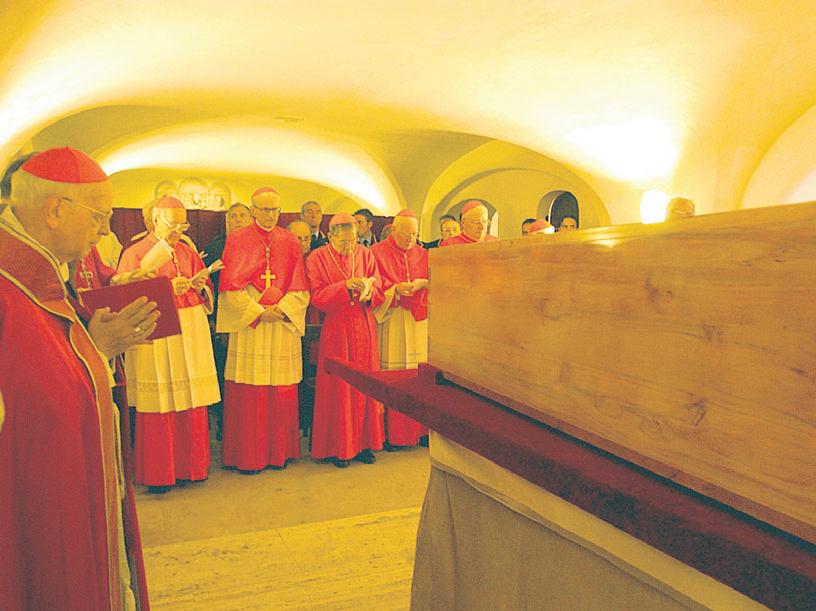
Although religious activities are officially permitted, there have been reports of torture, imprisonment and execution of people attempting to practice their religion.
VATICAN CITY (CNS) - In the week following Pope John Paul II’s death, more than 3 million pilgrims descended on Rome to honour the late pontiff, a Vatican statement said.
On April 12 the Vatican press office released a treasure trove of data from April 2, the day the Pope died, through to April 8, the day of his funeral.
According to final figures from the Italian government, record crowds headed to St Peter’s Basilica, where Pope John Paul’s body lay in front of the main altar April 4-7, with 21,000 people entering the church every hour, or 350 per minute.
Visitors waited an average of 13 hours to pay their respects; the longest wait was 24 hours, and the longest line was more than three miles.
On April 8, the day of the Pope’s outdoor funeral Mass, 500,000 packed St Peter’s Square and the street leading up to it, with another 600,000 watching the Mass on giant television screens
set up near the Vatican and at sites on the outskirts of Rome. After waiting in endless lines, pilgrims were evidently parched: Volunteers distributed more than 3 million free bottles of water over seven days. With all that water flowing, the 3,600 portable toilets set up around Rome got a workout.
The number of riders on Rome’s already crowded public transportation system increased by 40 percent. Buses and trams carried an additional 1.1 million people per day, and the city’s subway system carried an additional 300,000, with a total of more than 15 million trips above and below ground April 2-8.
All those pilgrims, many from foreign countries who did not speak Italian, needed help at times. The City of Rome’s information line responded to 20,000 calls per day, up from a daily average of 8,000, with operators answering queries in English, French, German, Spanish, Chinese and Arabic. City officials distributed 400,000 flyers with useful information for tourists, and 20 series of text messages with updates on traffic were

relayed to 43,500 Romans who signed up for the service.
The weary and the sick took advantage of first aid stations more than 4,000 times. Rome ordered an extra 100 ambulances to handle the influx following the Pope’s death. On hand were 8,000 volunteers, 12,000 security and public order personnel, 2,700 local police officers, 1,000 firefighters, six helicopters, and 400 soldiers to help manage the crowds and any possible snafu.
Journalists contributed to a portion of the influx. More than 6,000 accreditations have been issued since April 2.
While the Vatican statement said it was impossible to count exactly the number of radio and television stations that broadcast the April 8 funeral, 80 channels transmitted from European Broadcasting Union positions, and 137 television stations from 81 countries informed the Pontifical Council for Social Communications that they carried the Mass. Vatican Radio broadcast live in seven languages. The Vatican Web site’s live video stream offered an alternative to television for 1.3 million people.
Contact:

Paul Gray looks at what the modern world made of Pope John Paul II
“After he preached at Auschwitz in 1979, a nun, kneeling before him, whispered: ‘I am a Polish nun. But I am also a Russian Jew.’
“In 2005, we need to say: ‘I am a prosperous Westerner. But I am also a woman of Darfur.’ And then to act accordingly.”
- Timothy Garton Ash, after the death of Pope John Paul II.
Many words have been written about the life of Pope John Paul II. Most powerful have been the words of those who, like the Doubting Thomas of the Gospel, did not believe. The dissenters, the atheists, the agnostic liberals, the non-Christians of every kind. Testimony from these is testimony indeed.
it is through the testimony of those who said he was no saint that his sanctity shines through most clearly
When we consider the words of the critics – those who openly disagree with the teachings of the Pope – we come to a new appreciation for what he achieved. Of course, loyal Catholics will praise him. Of course, those who have previously acknowledged the positive role John Paul played in the world will acknowledge it anew, in the period of remembrance of his death. But in the manner of the devil’s advocate, it is through the testimony of those who said he was no saint that his sanctity shines through most clearly.
Visual symbols help us here. One of the stranger of these was a black lace mantilla, worn at a commemorative service for the Pope in Westminster Cathedral by the wellknown feminist Catholic, women’s ordination supporter and wife to the British Prime Minister, Cherie Blair. “Old” British Catholics were reportedly miffed by Mrs Blair’s decision to sport the traditional headgear.
“I know she’s proud of her faith, but she didn’t have to rub our noses in it,” grumbled one to a reporter. The feeling was that the PM’s wife, who refused to wear a hat even to Princess Diana’s funeral in 1997, was going “over the top” to testify for the Pope.
The truth, though, was that Cherie Blair and her family had been deeply, personally touched by John Paul II. This was embodied in a moment in February 2003 when the Pope had celebrated Mass for them in his private chapel. Two of the Blairs’ children read the readings. Some believe that her husband, Tony, was personally given Holy Communion by the Pontiff, after a special request, at this Mass. Cherie Blair wore the mantilla that day, too.
Odder even than Cherie Blair’s mantilla was the choice by the Sydney Morning Herald, which prides itself on leading the nation’s debate on large issues of the day, to publish an obituary for the Pope penned by someone even deader than he was, the late Morris West.
West, a dissenting Catholic and author of many novels including The Shoes of the Fisherman, was
commissioned by the Herald back in 1997 to write an obituary for the Pope. Among West’s many rambling points in the article was the notion that the next Pope should convene a new general council of the Church – a Vatican III – to “complete” the work of Vatican II.
Complete. It would be interesting to know what percentage of adult Catholics, even today, have read the entire documents of Vatican II.
Combined with the Catechism of the Catholic Church – itself heavily based on those documents - and the many writings published by John Paul, these words together fill a reasonable-sized library. Apart from any other negative consequences, Morris West’s suggestion would necessitate the renewed slaughter of trees.
Sex, clearly, is the major point of departure for many of John Paul’s critics and many critics would undoubtedly label the Pope a “failure” on this one subject alone.
Australian broadcaster and columnist Philip Adams was one of those critics. In his obituary, Adams praised the Pope for taking a tougher stance against capital punishment than any of his predecessors. He also took a well-aimed swipe at members of the “Catholic commentariat” in Australia – Frank and Miranda Devine, Christopher Pearson and others - who seemed readier to support Bush and Howard on the issue of the Iraq war than to support the moral stance of their own Pope.
Yet for Adams, sex seemed an even bigger issue. Adams blamed the Pope personally for “many” of the deaths of AIDS victims in Africa. “All it needed was for John Paul to change his policy on the condom,” Adams wrote. “But he refused to consider it. The condom was wrong, he proclaimed, in any and every circumstance. This monstrous folly follows the Pope to his grave. And theirs.”
But is African AIDS really caused by the Pope’s condom policy - or do other factors contribute to the spread of this horrific disease?
Factors like poor hygiene and poor nourishment, and unsafe sexual practices other than the habit of not using condoms.
For single-minded critics like Adams, such questions are never asked. That the pope must be wrong on sex is an article of secular faith.
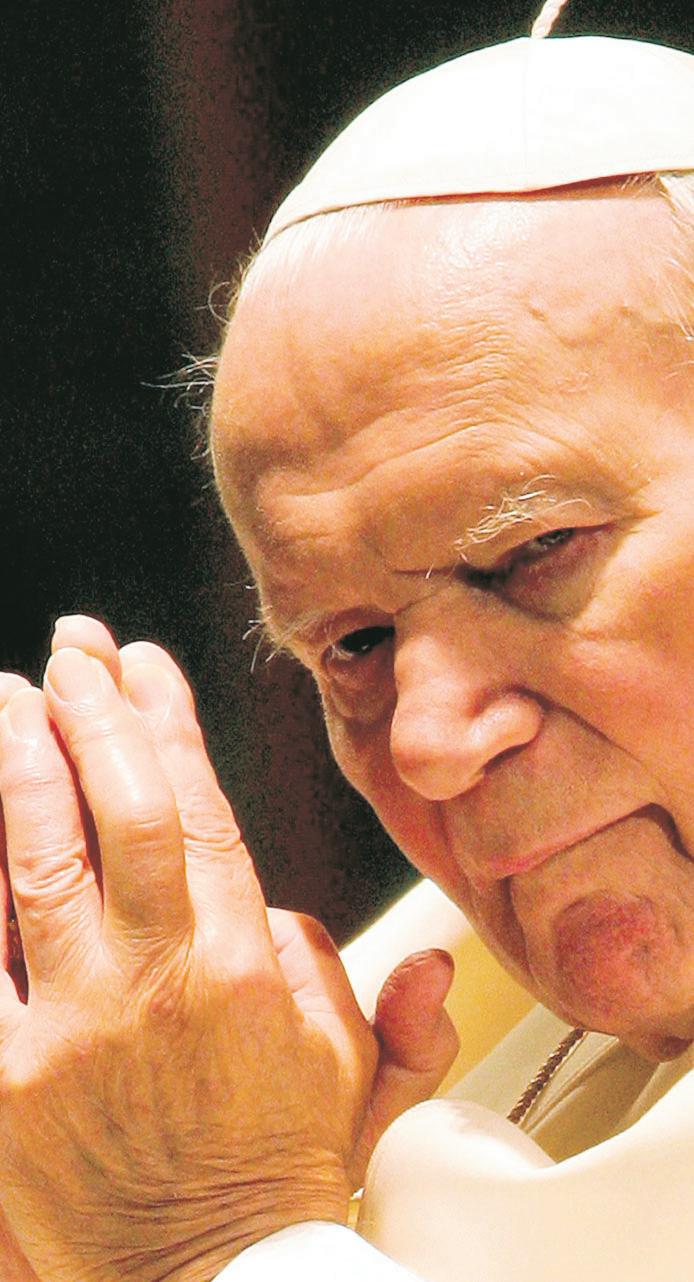
This is a cultural theme that extends well beyond the polemics of a lone columnist.
This point was dealt with brilliantly by philosopher and psychoanalyst Slavoz Zizek. Zizek is another writer who disagreed with the Pope on some things, including his promotion of Opus Dei and his handling of the clerical pedophilia scandal.
Yet it was precisely John Paul’s determination not to bow to the demands of our permissive, lib-
eral society on issues like sex and divorce which made him great, according to Zizek.
“The greatness of John Paul II was that he personified the disavowal of the liberal, easy way out,” Zizek wrote. “Even those who respected the Pope’s moral stance usually accompanied their praise with the caveat that he nonetheless remained hopelessly old-fashioned, medieval even, by sticking to dogmas out of touch with the demands of modernity. How could someone
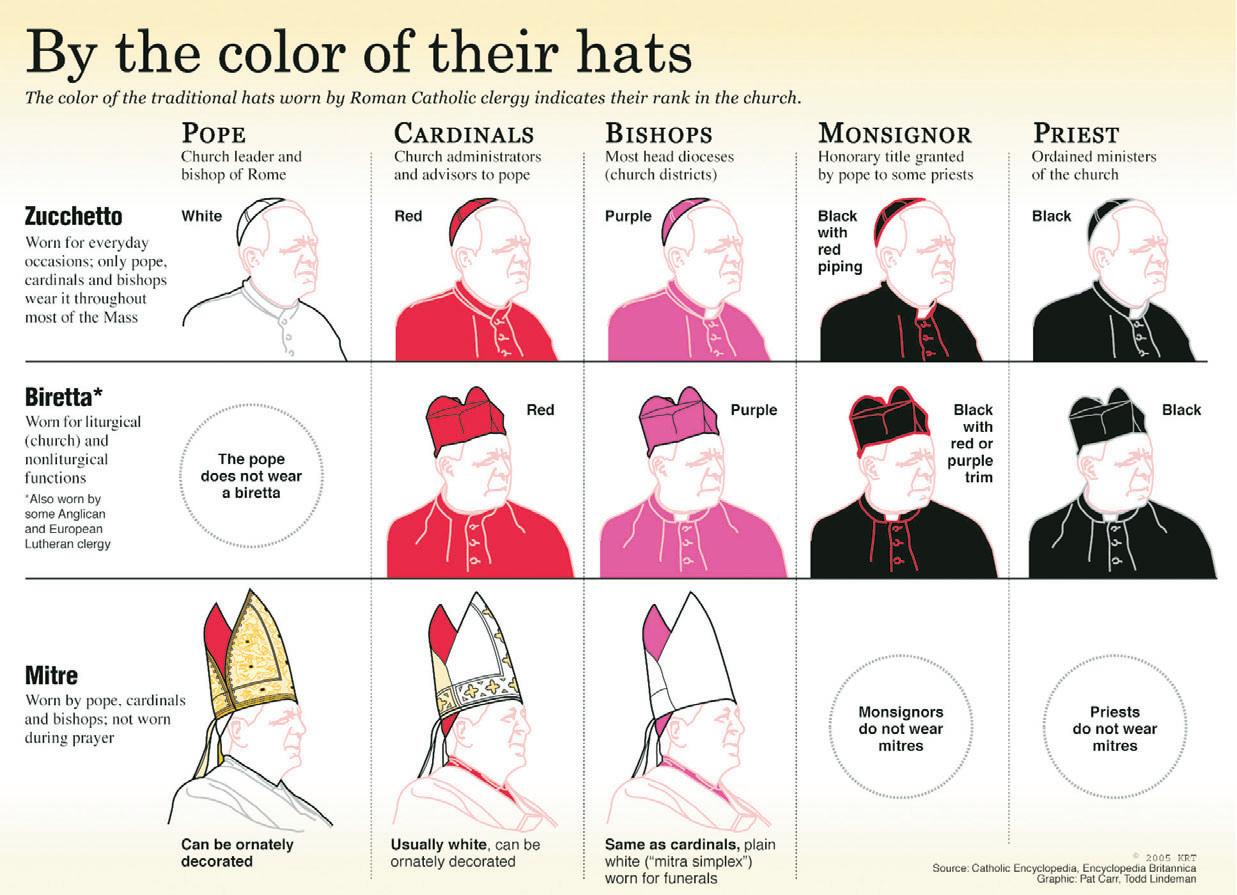
today ignore contraception, divorce or abortion? How could the Pope deny the right to abortion even to a nun who got pregnant through rape (as he effectively did in the case of the raped nuns in Bosnia)? Isn’t it clear that, even when one is in principle against abortion, one should consent to a compromise in such an extreme case?
To the Pope, Capitalism and Communism were merely two form s of materialism
“One can see why the Dalai Lama is a much more appropriate leader for our postmodern, permissive times,” Zizek argued. “He presents us with a feel-good spiritualism without any specific obligations. Anyone, even the most decadent Hollywood star, can follow him while continuing their moneygrabbing, promiscuous lifestyle. In stark contrast, the Pope reminded us that there is a price to pay for a proper ethical attitude. It was his very stubborn clinging to ‘old values,’ his ignoring the ‘realistic’ demands of our time, even when the arguments against him seemed ‘obvious’ (as in the case of the raped nun), that made him an authentic ethical figure.”
The rejection of the Pope’s sexual teachings extends even to the writings of a fine modern historian like Timothy Garton Ash. Ash wrote a definitive history of the Solidarity movement in Poland (The Polish Revolution: Solidarity). After John Paul’s death, Ash confessed that he was an agnostic liberal who hoped, like Philip Adams, that the next Pope would reverse the policy of “reinforcing Paul VI’s ban on artificial means of contraception.”
It is certainly more than a ban by a single Pope. But despite this apparently “illiberal” blemish, Timothy Garton Ash found much to admire in John Paul II. He quoted, for example, the great British actor John Gielgud, who praised the Pope’s ability to speak lines to a crowd as “perfect.” John Paul possessed, it seems, an ability to speak to individual people as though they were the only person who existed. He also had the ability to stir a crowd in a way that could strike even hardened crowd-pleasers with amazement. US President Bill Clinton, for one, once said after witnessing the Pope in public: “I’d hate to have to run against that man.”
The Pope also did other things. He destroyed Communism – no small feat – and gave the world a moral rationale for combatting capitalism. To the Pope, Capitalism and Communism were merely two forms of materialism – the same despicable beast under two different guises.
According to Timothy Garton Ash, the Pope was also unique in advancing a vital new historical concept – what Ash calls “moral globalisation.” This is a new development of the principle of the Good Samaritan. We must share the suffering of those whose suffering we witness. Through the new methods of mass communications, this is now a vast neighbourhood – a vaster neighbourhood than our parents and grandparents could ever understand.
A simple biblical imperative. We are prosperous Westerners. But we are also women of Darfur. John Paul II has shown us this, Catholics and non-Catholics alike.
They are Sarah Taylor of Adelaide and Nathan Galea of Sydney. Sarah and Nathan were selected by the Bishops Committee from a large field of candidates nominated by their local bishops.
“The quality of the nominees was very high and the choices difficult. I am sure these two young people will be fine ambassadors for the Australian Church,” said Bishop Connors.
Sarah is the National President of the Young Christian Workers. She
has a strong commitment to working with young people and to supporting their spiritual development. In the YCW she has been involved in the formulation and direction of a national Plan of Action as well as participating in formation events for members.
Nathan is studying to be a secondary teacher and works in the Sydney Catholic Youth Ministry. He works with young people at both diocesan and parish levels.
“I am extremely excited to be given this opportunity to represent Australia,” he said when told of his nomination.
World Youth Days have been held in various locations around the world. The last one was in Toronto in 2002. The late Holy Father, Pope John Paul II, was the driving force behind these gatherings, the largest
of their kind in the world. Their past success is a strong sign that they will continue in the new pontificate.
About 1,300 young Australians made the last WYD pilgrimage to Toronto. Sarah and Nathan will join approximately 2,000 Australian youth representing every Diocese and from various groups and movements around the country as they prepare for the journey to Cologne.
From the big cities and from more remote areas, such as Port Pirie and Top End indigenous communities, the youth delegation will be accompanied by five Archbishops, 25 Bishops, about 50 priests and numerous leaders (religious and lay) from around the country. The bonds of friendship developed along the way have been one of the most enduring features of WYD.
■ BRICK REPOINTING
Phone Nigel 9242 2952
■ GUTTERS/DOWNPIPES
Need renewing, best work and cheapest prices. Free quote. Ph: Ad 9447 7475 or 0408 955 991 5008.
HANDYPERSON Home
maintenance good rates. Phone
■ PERROTT PAINTING PTY LTD
For all your residential, commercial painting requirements. Phone Tom Perrott 9444 1200.
■ PICASSO PAINTING
Top service. Phone 9345 0557, fax 9345 0505.
■ RETAILER OF CATHOLIC PRODUCTS
Specialising in gifts, cards and apparel for baptism, communion and confirmation. Ph: 9456 1777. Shop 12A, 64-66 Bannister Road, Canning Vale. Open Mon-Sat.
■ WORK FROM HOME
Around your children & family commitments. My business is expanding and I need people to open new areas all over Australia. Training given. Highly lucrative. www.cyber-success-4u.org
breakthrough and a new area of science. Learn more about optimal health and Glyconutrients by calling: Mary Anne 9284 1662. Find out Glyconutrients can provide you with a healthy business and a healthier life. HEALTH
■
Maria 0412 083 377 CARER
■ RESPITE OR LONG STAY
Dear reader
■ DUNSBOROUGH
■ ALL AREAS Mike Murphy 0416 226 434.
To book a classifieds advertisment call Eugene on 9227 7778
How to contact The Record Letters to the Editor cathrec@iinet.net.au Subscriptions Eugene Suares administration@therecord.com.au Advertising Chris Mizen advertising@therecord.com.au Tel: (08) 9227 9830 The Record 587 Newcastle St, Leederville WA 6902 PO Box 75 Leederville, WA 6902 Tel: (08) 9227 7080 Fax: (08) 9227 7087 Journalists Jamie O'Brien jamieob@therecord.com.au Bronwen Clune clune@therecord.com.au Mark Reidy reidyrec@iinet.net.au Production Derek Boylen production@therecord.com.au
HOUSE SITTER
HOUSE SITTER AVAILABLE
QUALIFIED MAKEUP ARTIST
■ SUCCEED FROM HOME Call Christine on Tel: 9256 2895
■ APARACIDA'S CAFE EMPORIUM
17 Blessing of Southern Cross Care (Inc) buildings, RivervaleArchbishop Hickey Closing Mass of Catholic Prayer Festival, New Norcia - Bishop Sproxton
19 Australian-Asian Association Cocktail Reception - Fr Antonio Paganoni CS
25 Anzac Day Commemorative Parade and Service - Fr Brian O’Loughlin VG
47 Adelaide St, Fremantle beginning at 2.30pm, Come and
Sunday April 17
Please be advised that the deadline for Panorama items has been brought forward to 4.30pm on Mondays.
If you would like your notice to be included in the Archdiocesan Panorama please contact Eugene Suares on 9227 7080 or email: administration@therecord.com. au.
Sunday April 17
BENEDICTINE OBLATES
St Gregory’s Chapter will meet at 2pm for a meeting and Vespers in St Joseph’s Convent, York St South Perth. All welcome. Enq 9388 3026
Sunday April 17
MOMENT OF PRAYER FOR THE CARDINALS AND CONCLAVE
Prayers for the Holy Spirit’s guidance as they choose a new Pope. At the Basilica of St Patrick,
ETERNAL WORD TELEVISION 12 PM ON ACCESS 31 An empire conquered: Early Christian martyrs in the Roman Empire. Please send donations to keep EWTN on Access 31 to Rosary Christian Tutorial Association, PO Box 1270, Booragoon 6954. Tapes available on request, and on free loan from video libraries. Enq 9330-1170.
Wednesday April 20
HILLS AND EASTERN SUBURBS MENTAL HEALTH GROUP LESMURDIE
Next meeting at our Lady of Lourdes Parish Centre, 207 Lesmurdie Rd, Lesmurdie from 7.30pm to 9pm. Enq Marge or Tom 9291 6282, Natalie 9295 1907 or Barbara Harris of The Emmanuel Centre 9328 8113.
Sunday April 24
BULLSBROOK CELEBRATION ALTERED
SACRI Association will celebrate the 58th anniversary of the Apparition of the Virgin of the Revelation to Bruno Cornochiola, at her shrine 36 Chittering Rd, Bullsbrook. There will be Marian procession, Holy Mass and Benediction from 2pm. All are most welcome. Bus Bookings Mrs Haddon 9277 5338 Enq SACRI 9447 3292
Thursday April 28
HEALING MASS
St Augustine’s 38 Gladstone Road, Rivervale from 7.30pm the Sacrament of the Anointing of the
Sick with Fr Bob Anderson, Servite Fathers. Enq 9361 6290
Saturday April 30
FOCOLARE MOVEMENT PRESENT FAMILYFEST LOVE
BUILDS PEACE
To be held at the main hall at the Little Sisters of the Poor, 2 Rawlings St Glendalough, commencing at 10.30am, concluding at 4.30pm. Entrance is free, food and drinks will be on sale. Enq Focolare 6278 3425 or 9349 4052
Sunday May 1
FAREWELL FOR THE SISTERS OF ST JOSEPH
St Joseph’s Parish, Northam, cordially invites all interested people to attend a Farewell Mass for the Sisters of St Joseph of the Apparition who are leaving Northam at the conclusion of 116 years service. Mass will be from 11am in St Joseph’s Church. Light refreshments will be available at the conclusion of Mass. Please advise Mrs Carol Leeder 0429 339 986 if you are able to attend.
Saturday May 7
DAY WITH MARY
At St Catherine of Siena, Constable St, Gingin from 9am to 5pm. A video on Fatima will be shown followed by a day of prayer and instruction based on Fatima. The day includes Penance, Holy Mass, Eucharistic Adoration and Sermons on the Eucharist and Our Lady. BYO. Enq Franciscan Sisters 9250 8286. Bus Bookings Nita 9367 1366
Saturday May 28
MAY QUEEN BALL
From 7.30 to 12.30am to fund raise for Holy Family church Maddington. It will be held at Maddington Community Centre (corner of Yule & Alcock Street) For more information contact Francis Williams 9459 3873 or 9493 4287 or 0404 893 877. Email francis@perthfamily.com
SECULAR FRANCISCANS IN WA
You are invited to find out more about following Franciscan way of life as a lay person. Contact the group nearest you and come along. Midland fraternity meets on the second Friday of each month at 1pm, contact Mary 9377 7925. Balcatta fraternity meets on the third Sunday of each month at 3pm contact Dunstan 9276 9415. Perth fraternity meets on the fourth Sunday of each month at 2.30pm contact John 9385 5649. Dardunup fraternity meets on the third Sunday of each month at 1.30pm contact 9721 6815.
CATHOLICS EXPERIENCING THE BIBLE
An exciting opportunity to learn more about your faith. Enrolments are now open for study at ‘Acts2come’ Catholic Bible College. Subjects include Bible Timeline, Theology of the Body, Acts of the Apostles, Spiritual Gifts, Life Skills, Christian Virtues in a Post-modern Society and Catholic Ethics. Day, evening, and part-time courses are available. For more information, contact Jane Borg on 9202 6859
Asked about the possibility of John Paul II’s immediate canonization, the Vatican clarified that the decision is the “exclusive competence” of his successor.
“Any other point of view is out of place,” Vatican spokesman Joaquín Navarro Valls told reporters last Saturday.
During Friday’s funeral Mass,
chants coming from the crowds called for “sainthood now” for John Paul II.
Italian newspapers reported Saturday on the existence of a dossier of miracles attributed to the Pope, but for his beatification, a miracle attributed to his intercession must take place after his death. And a miracle for his canonization must take place after his beatification.
The Church has established that a cause may not be opened for at least
five years after the person’s death, so that emotion will not affect the investigations.
A Pope has the authority to make exceptions. This is what John Paul II did in the case of Mother Teresa of Calcutta, whose cause opened less than five years after her death.
John Paul II proclaimed 1,338 blessed and 482 saints, more than all his predecessors together since 1588, when procedures for these causes were instituted. ZENIT

A cardinal who worked closely with John Paul II says that he was once cured of a serious throat condition after the Pope prayed for him and touched the affected area.
Cardinal Francesco Marchisano, archpriest of St. Peter’s Basilica, revealed details of the incident on Saturday. The Italian cardinal, a friend of Karol Wojtyla’s since 1962, spoke of his previously unpubli-
- the year 1989, this situation changed.
The last decade of the century was free of the previous tensions; that does not mean that it did not bring with it new problems and difficulties. In a special way may divine providence be praised for this, that the period of the socalled ‘Cold War’ ended without violent nuclear conflict, the danger of which weighed on the world in the preceding period.
4. Being on the threshold of the third millennium “in medio Ecclesiae” I wish once again to express gratitude to the Holy Spirit for the great gift of Vatican Council II, to which, together with the entire Church - and above all the entire episcopacy - I feel indebted. I am convinced that for a long time to come the new generations will draw upon the riches that this council of the 20th century gave us. As a bishop who participated in this conciliar event from the first to the last day, I wish to entrust this great patrimony to all those who are and who will be called in the future to realise it. For
cized healing during the Mass he celebrated in the basilica with Archbishop Stanislaw Dziwisz, the Pope’s personal secretary. The cardinal recalled that five years ago doctors operated on one of the main arteries in his neck that supply blood to the brain, “and by error of the doctors, my right vocal cord was paralysed, obliging me to speak almost imperceptibly.”
Referring to John Paul II, he said: “As a father, he came out to meet me and, for two or three minutes stroked the area where I had been operated. “I was speechless. Meanwhile, he said to me: ‘Don’t be afraid, you’ll see, you’ll see. ... The Lord will give you back your voice. You’ll see. I will pray for you. You’ll see ...’” “Soon after, I was cured,” recalled Cardinal Marchisano.

my part I thank the eternal Pastor who allowed me to serve this very great cause during the course of all the years of my pontificate.
“In medio Ecclesiae” ... From the first years of my service as a
Paul II’s funeral was a veritable “World Youth Day,” a “historic event,” according to a number of journalists.
Rome became the point of pilgrimage for millions of faithful wishing to say their last farewell to the Pope, who died on April 2.
“The atmosphere one senses here is that of a World Youth Day; I think the Pope anticipated” the next Youth Day scheduled this August in Germany, said Father Josetxo Vera of “Popular Television” of Navarre, Spain.
With his death the Pope convoked hundreds of thousands of people to Rome, including many youths, the priest commented to ZENIT in the time leading up to the funeral.
“This is the atmosphere we are experiencing: There has been much singing, especially while waiting in line,” he said.
Father Vera, reporting for Truth magazine of Spain, said: “During the whole week there was not a single quarrel, or disagreeable look.
“There was nothing but kindness, on the part of the organization - with great patience for all, and by the people who came. I think it is something that only the Catholic Church can achieve: to create a good atmosphere.”
“There have also been people going to confession, and yesterday some made a pilgrimage from St. John Lateran” he said, commenting that these are activities typical of a World Youth Day.
An aspect of John Paul II’s life that particularly impressed the priest was that “this Pope, in all his audiences, was always close to the sick, people who were suffering; now they also had reserved places near him in prayer, because anyone who arrived in a wheel-
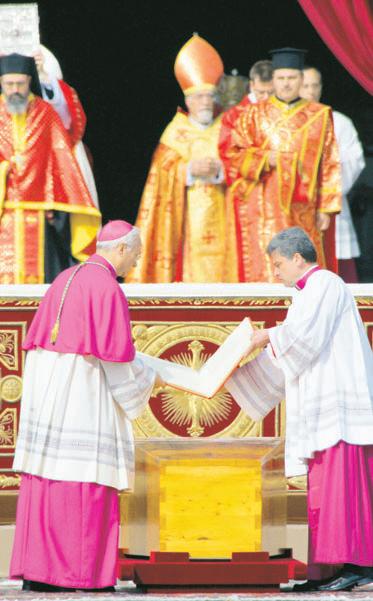
chair was placed near the Pope, where they prayed next to the cardinals.”
“John Paul II always trusted and relied on the sick, and lived his sickness with them, and they were close to him at the moment of his death, and the cardinals were not higher than the sick,” Father Vera continued.
“The reaction aroused in people” after the Pope’s death was the reason that María Guzmán, reporting for the news daily AM de León of Guanajuato, Mexico, came to Rome.
“Regardless of beliefs and tendencies, to my mind, John Paul II was the only moral leader that we had; so we see the reaction he has generated,” said Guzmán.
Reflecting on the crowd in St. Peter’s Square, composed of political and religious leaders from all over the world, and hundreds of thousands of faithful, Guzmán commented on “the presence of leaders of non-Catholic countries” and “that feeling of the world in general over the absence of the only moral leader that was left.”
ZENIT
bishop - precisely thanks to the council - I was able to experience the fraternal communion of the episcopacy. As a priest of the Archdiocese of Krakow I experienced the fraternal communion
among priests, and the council opened a new dimension to this experience.
5. How many people should I list! Probably the Lord God has called to himself the majority of them. As to those who are still on this side, may the words of this testament recall them, everyone and everywhere, wherever they are.
During the more than 20 years that I am fulfilling the Petrine service “in medio Ecclesiae” I have experienced the benevolence and even more the fecund collaboration of so many cardinals, archbishops and bishops, so many priests, so many consecrated persons - brothers and sistersand, lastly, so very, very many lay persons, within the Curia, in the vicariate of the Diocese of Rome, as well as outside these milieux.
How can I not embrace with grateful memory all the bishops of the world whom I have met in “ad limina Apostolorum” visits! How can I not recall so many nonCatholic Christian brothers! And the rabbi of Rome and so many representatives of non-Christian
religions! And how many representatives of the world of culture, science, politics and of the means of social communication!
6. As the end of my life approaches I return with my memory to the beginning, to my parents, to my brother, to the sister (whom I never knew because she died before my birth), to the parish in Wadowice, where I was baptised, to that city I love, to my peers, friends from elementary school, high school and the university, up to the time of the occupation when I was a worker, and then in the parish of Niegowic, then St Florian’s in Krakow, to the pastoral ministry of academics, to the milieu of ... to all milieux ... to Krakow and to Rome ... to the people who were entrusted to me in a special way by the Lord.
To all I want to say just one thing: “May God reward you.”
“In manus tuas, Domine, commendo spiritum meum.”
March 17, 2000
Pope John Paul II “offered his life for his flock and for the entire human family,” the dean of the College of Cardinals told hundreds of thousands of people gathered on April 8 for the Pope’s funeral Mass and burial.
Cardinal Joseph Ratzinger, the dean, presided over the Mass concelebrated by 164 of the world’s 183 cardinals. Another 500 bishops and 3,000 priests, wearing red stoles, participated.
Kings, queens, presidents, Cabinet ministers and ambassadors representing more than 140 nations sat off to one side of Pope John Paul’s casket.
On the other side of the altar sat the representatives of the Orthodox, Oriental Orthodox, Anglican, Protestant and US evangelical communities.
Ten Jewish and 10 Muslim organisations sent delegations, as did Buddhists, Sikhs and Hindus.
An estimated 300,000 people filled St Peter’s Square and the streets surrounding the Vatican. Hundreds of thousands of other pilgrims watched the funeral on big-screen televisions set up in the main squares of Rome and at a university on the outskirts of the city.
In his homily, Cardinal Ratzinger said Pope John Paul’s life was a constant response to Christ’s call to all believers, “Follow me.”
Even when he was called to enter into “the communion of Christ’s suffering” as he aged and Parkinson’s disease rendered him unable to walk and later unable to speak, Pope John Paul continued to follow, the cardinal said.
“The Pope suffered and loved in communion with Christ, that is why the message of his suffering and his silence proved so eloquent and so fruitful,” Cardinal Ratzinger said.
As television cameras swung round to the window of the papal apartments, the German cardinal
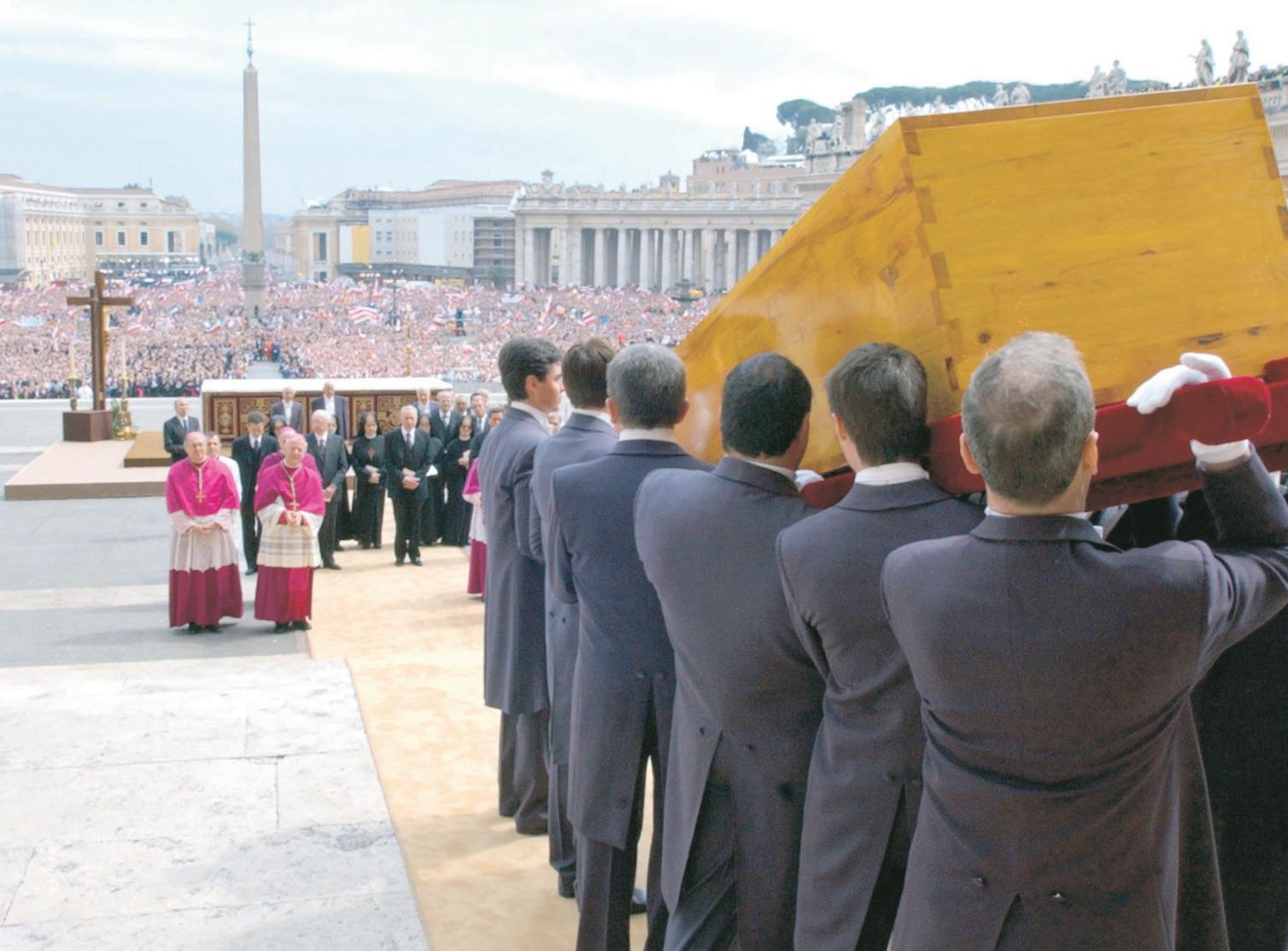
said Pope John Paul had come to the window on March 27 to give his solemn Easter blessing to the Church and the world, but was not able to get out the words.
“We can be sure that our beloved Pope is standing today at the window of the Father’s house, that he sees us and blesses us,” the cardinal said.
“Yes, bless us,” he said as the crowd broke out in loud applause.
Members of the crowd, particularly the Poles, waved their national flags, but several banners with slogans were seen as well.
The common message was summed up on one sign: “Sainthood now.”
Two hours before the funeral Mass began, 15 Vatican officials, other priests and the Pope’s closest aides gathered in St Peter’s Basilica to witness Pope John Paul’s body being placed in a cypress casket and
Continued from page 3
and useful for the people with whom he particularly entrusted me, for the question of the Church, for the glory of God himself.
I do not wish to add anything to what I wrote a year ago - only to express this readiness and, at the same time, this trust, to which the current spiritual exercises have again disposed me.
MARCH 5, 1982
In the course of this year’s spiritual exercises I have read (a number of times) the text of the testament of March 6, 1979. Although I still consider it provisional (not definitive), I leave it in the form in which it exists. I change nothing (for now), and neither do I add anything, as concerns the dispositions contained therein.
The attempt upon my life on May 13, 1981, in some way confirmed the accuracy of the words written during the period of the spiritual exercises of 1980 (February 24-March 1).
All the more deeply I now feel that I am totally in the hands of God - and I remain continually at the disposal of my Lord, entrusting myself to him in his Immaculate Mother (Totus tuus).
MARCH 5, 1982
In connection with the last sentence in my testament of March 6, 1979 (“concerning the site, that is, the site of the funeral, let the College of Cardinals and compatriots decide”) - I will make it clear that I have in mind: the metropolitan of Krakow or the general council of the episcopate of Poland.
In the meantime I ask the College of Cardinals to satisfy, as far as possible, any demands of the above-mentioned.
MARCH 1, 1985
DURING THE SPIRITUAL EXERCISES
Again - as regards the expression “College of Cardinals and compatriots”: the “College of Cardinals” has no obligation to consult “com-
closed. The “rogito,” a document rolled up and placed in a tube, was read before being placed in the casket with the body. It described “the life and the most important works of the deceased pontiff.”
The document said the Pope died on April 2 at 9.37 p.m: “The whole Church, especially young people, accompanied his passing in prayer.”
“John Paul II was the 264th Pope. His memory remains in the heart of the Church and of all humanity,” it said.
The document, which included biographical information, said his pontificate of more than 26 years “was one of the longest in the history of the Church” and took place during a time of great historical change.
Among the specific themes of his pontificate highlighted in the document were his love for young people; his promotion of dialogue
with Jews and with members of other religions; his prayerfulness and devotion to the rosary; and the “wisdom and courage” with which he promoted Catholic doctrine.
Cardinal Eduardo Martinez Somalo, the camerlengo or cham-
In two millenniums of Christianity, Rome had not received as many pilgrims as it did for John Paul II’s funeral. Data from the municipality show:
● 3 million pilgrims came to Rome to say goodbye to the Pope.
● Some 250,000 were able to participate in the funeral rites on Friday in St. Peter’s Square and in the Via della Conciliazione.
berlain of the Holy Roman Church, explaining the rites to those assembled, said, “We will cover his face with respect and veneration in the deep hope that he can contemplate the face of the Father, together with the Blessed Virgin Mary and all the saints.”
Then Archbishop Stanislaw Dziwicz, the Pope’s personal secretary for more than 30 years, and Archbishop Piero Marini, the Pope’s master of ceremonies, extended a white silk cloth over his face.
To the applause of the crowd, the Pope’s casket - with a simple cross and “M” for Mary on it - was carried by 12 laymen into St Peter’s Square and placed before the altar, which was not under the canopy usually erected for papal Masses.
As the procession moved into the grotto under St Peter’s, psalms were chanted with the response: “May Christ welcome you into paradise.”
In the chapel where the Pope was to be buried, a deacon led prayers that God would free Pope John Paul’s soul “from the power of darkness,” forgive his sins, accept his good works, give him peace and allow him to join “the company of saints.” A simple cross and a bronze plaque with the Pope’s name were placed on top of the cypress coffin, which was sealed with red ribbons and placed inside a zinclined wooden casket, said Joaquin Navarro-Valls, the Vatican spokesman. CNS
● About 1.4 million faithful rendered homage to John Paul II’s mortal remains in St Peter’s Basilica.
● During the period, some 1.5 million passengers travelled in Rome’s subways.
● 10,000 volunteers of the Civil Protection, the municipality of Rome, the Boy Scouts, and other organisations assisted.
● 8,963 members of the security forces helped maintain public order.
ZENITpatriots” on this subject, however it can do so, if for some reason it feels it is right to do so.
SPIRITUAL EXERCISE OF THE JUBILEE YEAR 2000 MARCH 1218
FOR MY TESTAMENT
1. When, on October 16, 1978, the conclave of cardinals chose John Paul II, the primate of Poland, Cardinal Stefan Wyszynski told me: “The duty of the new Pope will be to introduce the Church into the third millennium.” I don’t know if I am repeating this sentence exactly, but at least this was the sense of what I heard at the time.
This was said by the man who entered history as the primate of the millennium. A great primate. I was a witness to his mission, to his total entrustment. To his battles. To his victory. “Victory, when it comes, will be a victory through Mary.” The primate of the millennium used to repeat these words of his predecessor, Cardinal August Hlond.
In this way I was prepared in
some manner for the duty that presented itself to me on October 16, 1978. As I write these words, the Jubilee Year 2000 is already a reality. The night of December 24, 1999, the symbolic door of the great jubilee in the Basilica of St Peter’s was opened, then that of St John Lateran, then St Mary Major on New Year’s, and on January 19 the door of the Basilica of St Paul Outside the Walls. This last event, given its ecumenical character, has remained impressed in my memory in a special way.
2. As the jubilee year progressed, day by day the 20th century closes behind us and the 21st century opens.
According to the plans of divine providence I was allowed to live in the difficult century that is retreating into the past, and now, in the year in which my life reaches 80 years (“octogesima adveniens”), it is time to ask oneself if it is not the time to repeat with the biblical Simeon “nunc dimittis.”
On May 13, 1981, the day of the attack on the Pope during the general audience in St Peter’s Square,
divine providence saved me in a miraculous way from death. The one who is the only Lord of life and death himself prolonged my life, in a certain way he gave it to me again. From that moment it belonged to him even more. I hope he will help me to recognise up to what point I must continue this service to which I was called on October 16, 1978.
I ask him to call me back when he himself wishes. “In life and in death we belong to the Lord ... we are the Lord’s” (cf. Rm 14:8). I also hope that, as long as I am called to fulfill the Petrine service in the Church, the mercy of God will give me the necessary strength for this service.
3. As I do every year during spiritual exercises I read my testament from March 6, 1979. I continue to maintain the dispositions contained in this text. What then, and even during successive spiritual exercises, has been added constitutes a reflection of the difficult and tense general situation which marked the ‘80s. From autumn of
Archbishop Barry Hickey said he was very proud of the response by the people of the Archdiocese to the death of Pope John Paul II and particularly to the three main religious services conducted in the Cathedral last week.
He was speaking at the end of the Pontifical Requiem Mass on Friday night. Although held only a short time after the conclusion of the television coverage of the Pope’s funeral, the Mass drew a congregation which packed the Cathedral to overflowing.
This followed an ecumenical service on Wednesday evening and an invitation-only Mass on Thursday night, both of which drew big crowds at short notice. Archbishop Hickey said he was grateful for the response of religious leaders from other denominations and other faiths for their support of both functions, and for the response of civic and political leaders, senior representatives of the defence forces, the consular corps, the clergy and a wide range of community and parish representatives.
Although invitations could be issued only on Tuesday, the large attendance at Thursday’s Mass included the Governor, Lt General John Sanderson, Premier Geoff Gallop and Mrs Gallop, Deputy Opposition Leader Paul Omodei, and former Premier Sir Charles and Lady Court, Lord Mayor Peter Nattrass and Federal Minister for the Ageing the Hon Julie Bishop, a number of State Ministers and Local Government leaders. (Full story of Wednesday and Thursday’s ceremonies, page 1)
Other ceremonies included a Mass for all students of Mercedes College, Mass for members of Religious Institutes, and the singing of the Divine Office for the Dead at 4pm on Friday by Archbishop Hickey, Bishop Sproxton and available priests. Many parishes conducted their own services, particu-
larly on Friday evening, including an almost full church at Ocean Reef where Polish Salvatorian priests highlighted the Pope’s Polish heritage.
The Archbishop also expressed his heartfelt thanks to the people who worked so hard to prepare the liturgies, print the service booklets, arrange invitations and carry out the myriad other tasks associated with such important ceremonies at such short notice.
Archbishop Hickey presided at Friday night’s Mass which was concelebrated by Bishop Don Sproxton, Mgr Thomas McDonald and Vicar General Fr Brian O’Loghlin and a large number of priests.
Bishop Sproxton said that only an hour after the Pope’s funeral in Rome the big congregation had come together to continue the “special period of prayer for the Holy Father and for ourselves so that we can continue to build on the legacy of the Pope.” He recalled the words of Cardinal Mahony, of Los Angeles, who said he had been shocked by the difference between the strong, vibrant man full of the courage of the Spirit and the body of the Pope who seemed to have given his all.
Bishop Sproxton said the Pope had given his all, just as he had pledged in his motto “Totus Tuus”.
His great strength was based on his hours of prayer eachday. “His deep spirituality and his constant communion with God drew him into the life of the Trinity and gave him the courage to stand up for the truth,” he said.
“It also gave him the love and compassion to reach out to the poor, the suffering, the sick, the disabled and the unwanted. “He reached out to the young and showed them that he truly put his faith and trust in them.
“He challenged them with the question: Is it better to be resigned to a life without ideals, made in our own image and likeness, or to seek goodness in a world reflecting the image of God?”
Here is an unofficial translation by the Vatican Information Service of Pope John Paul II’s spiritual testament, made public April 7.
THE TESTAMENT OF MARCH 6,1979
AND SUCCESSIVE ADDITIONS
“Totus tuus ego sum”
In the name of the Most Holy Trinity. Amen.
“Watch therefore, for you do not know on what day your Lord is coming” (cf. Mt 24:42) - these words remind me of the last call, which will happen at the moment the Lord wishes. I desire to follow him, and I desire that everything making up part of my earthly life should prepare me for this moment. I do not know when the moment will come, but like everything else, I place it too in the hands of the mother of my Master: Totus tuus. In the same maternal hands I leave everything and everyone with whom my life and vocation have linked me. In these hands I leave, above all, the Church, as well as my nation and all humanity. I thank everyone. Of
everyone I ask forgiveness. I also ask for prayer, that the mercy of God may appear greater than my weakness and unworthiness.
During the spiritual exercises I re-read the testament of the Holy Father Paul VI. That reading prompted me to write this testament. I leave no property behind me of which it is necessary to dispose. As for the everyday objects that were of use to me, I ask they be distributed as seems appropriate. My personal notes are to be burned. I ask that this be attended to by Father Stanislaw, whom I thank for his collaboration and help, so prolonged over the years and so understanding. As for all other thanks, I leave them in my heart before God himself, because it is difficult to express them.
As for the funeral, I repeat the same dispositions as were given by the Holy Father Paul VI. (Here is a note in the margin: burial in the bare earth, not in a sarcophagus, March 13, 1992).
“apud Dominum misericordia et copiosa apud Eum redemptio”

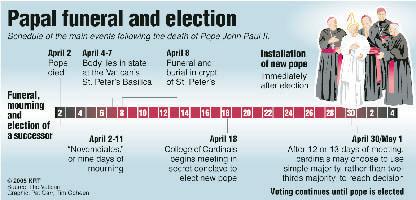
MARCH 5, 1990
After my death I ask for Masses and prayers.
UNDATED SHEET OF PAPER
I express my profound trust that, despite all my weakness, the Lord will grant me all the grace necessary to face according to his will any task, trial or suffering that he will ask of his servant, in the course of his life. I also trust that he will never allow me - through some attitude of mine: words, deeds or omissions - to betray my obligations in this holy Petrine See.
FEBRUARY 24MARCH 1, 1980
Also during these spiritual exercises, I have reflected on the truth of the priesthood of Christ in the perspective of that transit that for each of us is the moment of our own death. For us the resurrection of Christ is an eloquent (added above: decisive) sign of departing from this world - to be born in the next, in the future world. I have
read, then, the copy of my testament from last year, also written during the spiritual exercises - I compared it with the testament of my great predecessor and father, Paul VI, with that sublime witness to death of a Christian and a Pope - and I have renewed within me an awareness of the questions to which the copy of March 3,1979, refers, prepared by me (in a somewhat provisional way).
Today I wish to add only this: that each of us must bear in mind the prospect of death. And must be ready to present himself before the Lord and Judge - who is at the same time Redeemer and Father. I too continually take this into consideration, entrusting that decisive moment to the mother of Christ and of the Church - to the mother of my hope.The times in which we live are unutterably difficult and disturbed. The path of the Church has also become difficult and tense, a characteristic trial of these times - both for the faithful and for pastors. In some countries (as, for example, in those about which I read during the spiritual exer-
cises), the Church is undergoing a period of such persecution as to be in no way lesser than that of early centuries, indeed it surpasses them in its degree of cruelty and hatred. “Sanguis martyrum - semen christianorum.” And apart from this - many people die innocently even in this country in which we are living.
Once again, I wish to entrust myself totally to the Lord’s grace. He himself will decide when and how I must end my earthly life and pastoral ministry. In life and in death, Totus tuus in Mary Immaculate.
Accepting that death, even now, I hope that Christ will give me the grace for the final passage, in other words (my) Easter. I also hope that he makes (that death) useful for this more important cause that I seek to serve: the salvation of men and women, the safeguarding of the human family and, in that, of all nations and all peoples (among them, I particularly address my earthly homeland),
Continued over
Continued from page 3
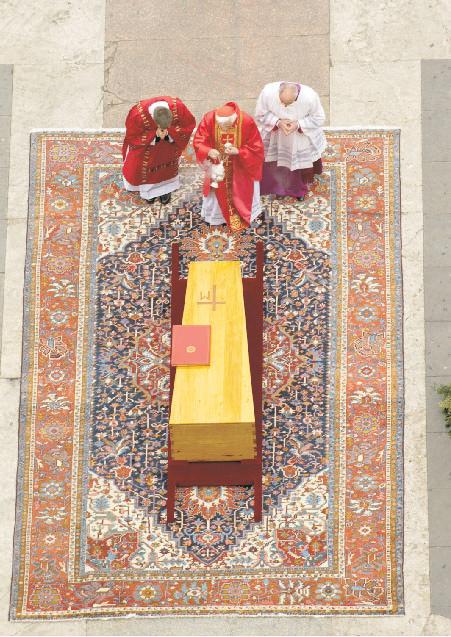
There was a moment during the funeral of Pope John Paul II so fitting for the man loved by millions that it will forever live in memory of those who witnessed it.
As his simply adourned casket was carried into St Peter’s Basilica a soft and rolling sound of thousands clapping echoed through St Peter’s Square. It was not a loud and thunderous clap, but one of deep respect and love.
The Pope’s funeral was a truly momentous occasion - and despite the millions around the world who were also bearing witness to the farewell of this great man - the event also had a sense of a very personal occasion.
Here in Perth the funeral was marked with a Mass coinciding with the event in Rome - both at the cathedral and in Latin at the Pro-Cathedral.
This followed an ecumenical service on Wednesday evening and an invitation-only Mass on Thursday night, both of which drew big crowds at short notice.
There is no doubt that what we have just witnessed is the passing of a Saint. For many there is no need to have Pope John Paul II officially canonised - that happened in the hearts of many on the day he was laid to rest.
Perth priest Fr Sean Fernandez was in Rome for the funeral of Pope John Paul II. Here he shares with us excerpts from his diary.
It is just a few hours since the funeral and the rain is gently falling in Rome. It held off for the funeral Mass for which we are all grateful. I left for the Basilica at five o’clock in the morning which isn’t so bad when one considers that there are people who camped out overnight. I was fortunate to get a Notificazione from the College which placed me somewhere in the section facing the sanctuary. We walked past crowds of people, mainly young people, many of whom were just dragging themselves out of sleeping bags. There were volunteers on hand giving out bottles of water and rows of porta-loos. One couldn’t fault the Italian preparations.
By the time the Mass began the Piazza was packed. I was surrounded by Polish clergy here to farewell Poland’s favourite son. There were several moments in the Mass which I found particularly moving. The first was when the Gentlemen of His Holiness carried out the coffin. It took me yet again to a mental picture of the Holy Father’s body, pale and still in death.
emotional good-bye for many■ By Jamie O’Brien
Perth’s religious and political leaders got down on their knees to pray last week during services for Pope John Paul II.
The Wednesday night service, which was attended by Jewish leader Rabbi David Freilich, Rev Fr Emmanuel Stamatiou from the Greek Orthodox Church, Rev Geoff Burger from the Lutheran Church, Anglican Rev Eira Clapton, Rahim Gory from the Islamic Association and Rev Gemmel Sherwood from the Uniting Church.
Director of Cathedral Liturgy and Music, Fr Timothy Deeter, read excerpts from past speeches of John Paul II to representatives of those communities in Perth.
Archdiocesan Ecumenical Affairs Committee Chairperson Fr Kevin Long, who was also present for the occasion, spoke about John Paul II’s deep commitment of the Catholic Church to ecumenism as irreversible despite slow progress and ever-new ethical and theological difficulties.
Fr Long and Fr Deeter both made the point that Ecumenism refers to the Catholic Church’s relations with other Christian denominations.
Following the reading from the address of John Paul II, Rabbi Freilich spoke about how, when John Paul II was a young priest, he counselled a Catholic Polish woman to raise a Jewish foster child in her care in the Jewish faith of the parents, who had been killed in the death camps, rather than in the Catholic faith of the foster mother.
The Rabbi praised the Pope’s esteem and affection for the Jewish people and remarked that John Paul II had been the first Pope to enter a synagogue since Saint Peter.
Muslim representative Rahim Gory referred several times to John Paul II as “Our Pope.” He praised John Paul II’s desire to have good relations with Islam and remarked that John Paul II was the first Pope to enter a mosque, which occurred at Damascus.
The various Christian representatives were also unanimous in voicing their esteem for the Pope’s desire to promote Christian unity.
Bishop Don Sproxton, who presided at the occasion, welcomed everybody and spoke about how John Paul II

was very concerned about fostering relations with Christian churches and other faith communities.
Bishop Sproxton thanked the representatives for their support of the Catholic Church at this time of bereavement.
Many were converted to a life of faith by his words and example as he reached out to them in the World Youth Days and on many other occasions.”
The Governor Lt Gen. John Sanderson AC,Premier Geoff Gallop and his wife Beverley, Sir Charles Court and Lady Court were present for the solemn Pontifical occasion on Thursday night at St Mary’s Cathedral.
In his homily for the occasion, Archbishop Hickey told the congregation the vestments he was wearing were made for John Paul II for his visit to Perth in 1986.
Present for the occasion were more than 120 priests, Bishops Don Sproxton, Myles McKeon and Peter Quinn. Also present was Perth Lord

The Cardinal’s clipped precise Italian did not come across as cold or unemotional and was a testament to the life of John Paul and the love which moved him. I was especially
touched when he spoke of the Pope’s last blessing Urbi et Orbi on Easter Sunday and went on to say that ‘We can be sure that our beloved (amato) Pope is at the window of the Father’s house looking at us and blessing us. Yes, bless us Holy Father.’ I think we all felt the same way.
Mayor Dr Peter Natrass and Federal Minister the Hon. Julie Bishop, a number of State Ministers, senior officers of the Defence Services and the consular corps and other community leaders.
The Archbishop mentioned that while millions would be going to Rome for the funeral, (which took place last Friday) and probably would not see the cortege, at least they had the opportunity to be there.
Archbishop Hickey spoke about a number of historical facts of John Paul II and what he stood for.
“He understood his role to be wider than the Catholic Community,” he said.
“He insisted too on respect for human life at every stage from the womb to old age and called on world leaders to give marriage and family life a privileged place in their nations.”
“He was not always listened to – but that did not daunt him,” the Archbishop said.
The Archbishop also spoke about how John Paul II was loved by millions of young people around the world who responded to his love for them.
The Archbishop said the secret of his influence was “His habit of deep personal prayer.”
At the end there was the commendation of the diocese of Rome led by Cardinal Ruini, the Vicar of the city followed by prayers led patriarchs, major archbishops of the Oriental churches. It was a splendid witness to the universality, richness and diversity of the Church united around the See of Peter. Then one final farewell, the pallbearers held the coffin so that we could all see it. The crowd clapped and clapped – I didn’t want to stop - bidding its bishop and Pope farewell.
This Pope looms large in my imagination and it is hard to imagine the Church without him.
He inspired us and even those who could not agree with everything he stood for were moved by his passion. I was given a broader perspective by an Australian bishop who is here for the funeral.
He said that as a young man Pius XII had been the first Pope he had known and so that established a certain picture in his imagination, then John XXIII came and broke the mould. He was followed by Paul VI, John Paul I and John Paul II, all different, but great men.
So, there will be a new Pope who will be his own man and have his own style; the Lord will provide for his Church. However, for now I still mourn the passing of a great man and I picture him at the window of the Father’s house, marked and transformed by his suffering, blessing us with his prayers.


Millions canonise the Pope in their hearts as he is laid to rest in one of the most historic funerals the world has witnessed.
A diary entry reflects on the Pope’s funeral 2
The Pope’s final spiritual testament 3
Calls for Sainthood resound at the funeral 4